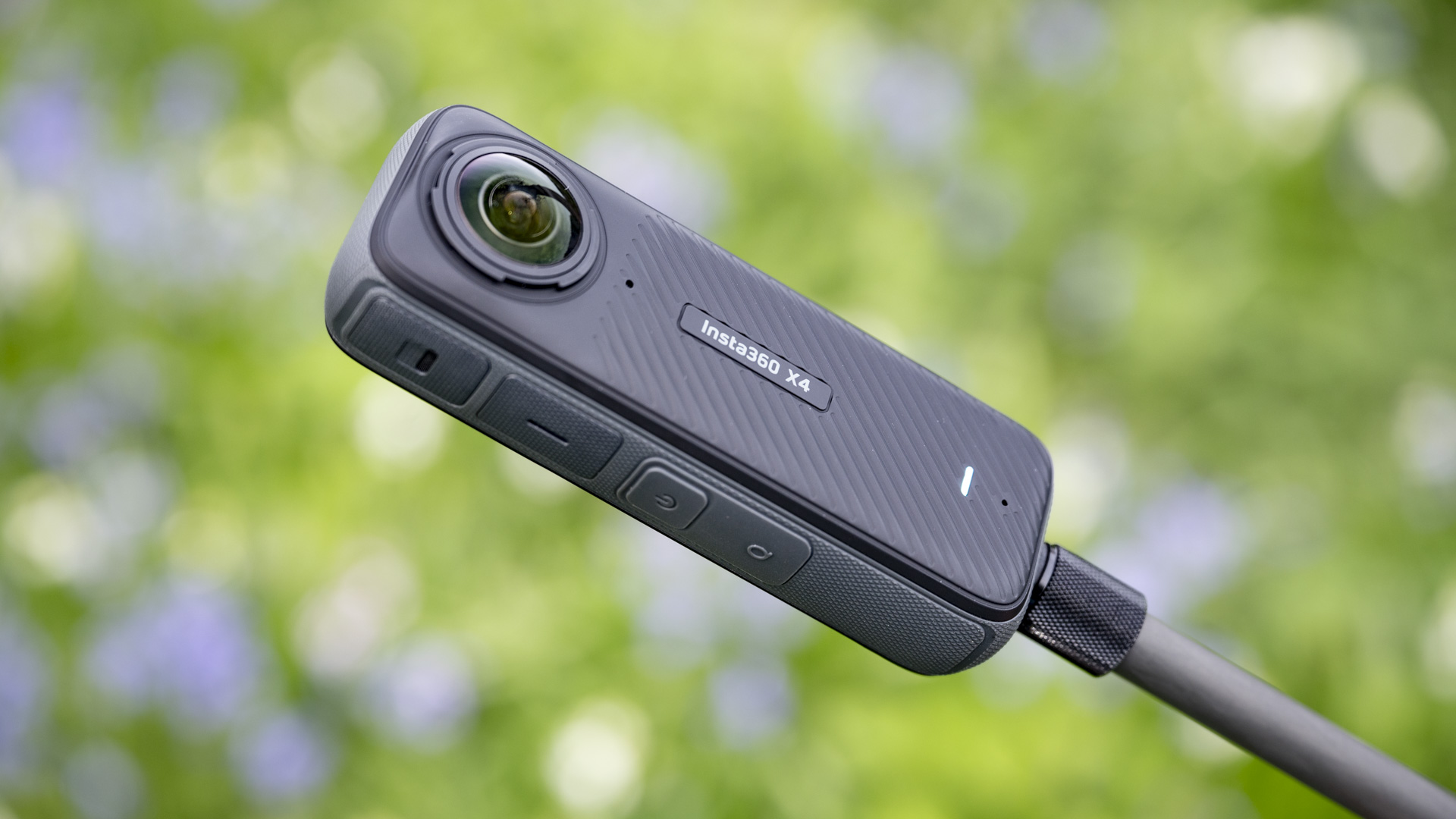
Insta360 X4: two-minute review
The best handheld 360-degree camera just got better with the latest iteration, the Insta360 X4. It builds on the X3, most notably bumping up the video resolution from 5.7K to 8K – and when we're talking about such a wide field of view from twin ultra-wide lenses, resolution matters.
Sensor: Dual 72MP 1/2-inch sensors
Video: 8K 360-degree, 5.7K up to 60fps, 4K up to 100fps, single lens up to 4K 60fps
LCD: 2.5-inch touchscreen
Video modes: Active HDR, Timelapse, Timeshift, Bullet Time
Connectivity: Wi-Fi, Bluetooth 5.0, USB-C
Memory card: MicroSD UHS-I
Size: 46 x 123.6 x 37.6mm
Weight: 203g
Battery: 2,290mAh
8K video up to 30fps trickles down improved capabilities at lower resolutions, too, with 5.7K video up to 60fps and 4K video up to 100fps. The single-lens mode also gets a bump in frame rate, with 4K up to 60fps.
Video can be shot in a standard mode with choice of standard, vivid and flat color profiles, plus there's a HDR video option for increasing perceivable detail in bright highlights and dark shadows – something the X4's small 1/2-inch and high-resolution sensor otherwise struggles with.
With its improved capabilities, the X4 feels like a more versatile pocket camera. Like the X3 it offers neat video modes you don't get on the best camera phones, like a 360-degree field of view that enables a shoot-first reframe later way of shooting, and creative effects such as Bullet Time and hyperlapse, but it now also feels like a highly capable action camera, vlogging tool, and – particularly for motorcyclists – dash cam.
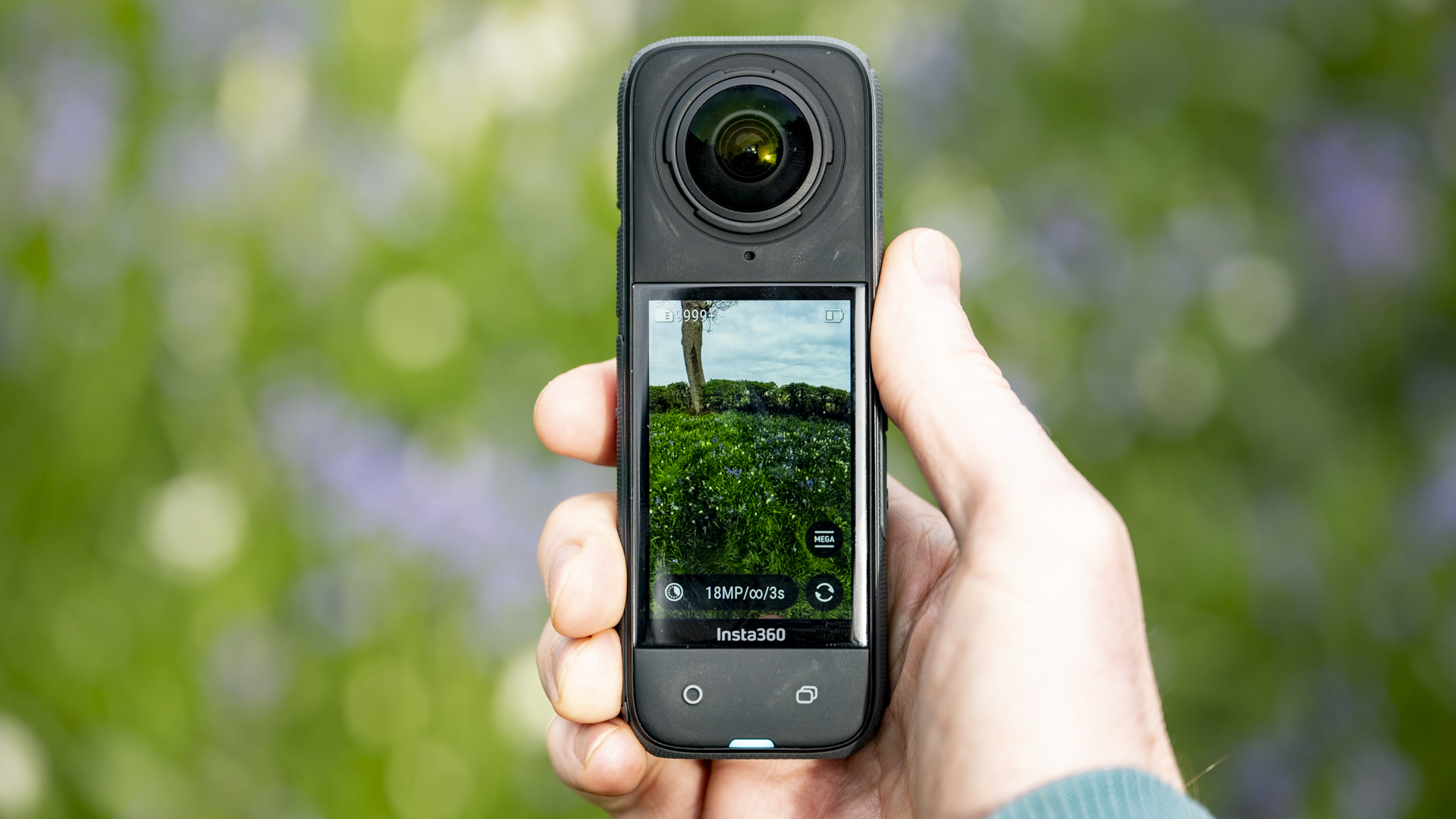
Video modes are supported by superb image stabilization that smooths out the shakes in your action footage, plus 360-degree horizon lock, which levels your edited footage when the camera rolls with the action.
Insta360's clever ‘invisible’ selfie stick allows you to film everything around you from a third-person view, whether it's mounted to bike handlebars or in the hand, while the extra-long selfie stick can give you a drone-like perspective. This is also a fully waterproof camera up to 33ft / 10m, so most experiences are covered.
We get a lovely new 2.5-inch touchscreen with tough Corning Gorilla Glass and simple interface, while a beefier battery has been squeezed into a body that’s roughly the same size as before, albeit around 10% heavier, and gives a huge bump in battery life.
The most capable rivals, such as the GoPro Max, Kandao Qoocam 8K, and Ricoh Theta X, are either dated or pricier – or both – and until they’re replaced, the X4 is 2024's unrivaled 360-degree camera, and could be the one extra pocket camera in addition to your smartphone that you choose for getaways, gatherings, and events. It handles superbly, and captures the kind of video footage you simply can't yet shoot with a phone.
Insta360 X4: price and availability
- Launched worldwide in April 2024
- Costs $499/ £499 / AU$879
The Insta360 X4 is available worldwide now following its April 16 announcement, and costs $499.99 / £499.99 / AU$879.99 – that's roughly a 10% markup from 2022's X3. Given inflation and the new camera’s improved capabilities, that price increase seems fair, although the X3 has fallen in price since its release, and will likely drop in price further following the X4’s launch, and is a compelling cost-effective alternative.
There are a host of optional accessories in the Insta360 ecosystem, including various selfie sticks (one of which is designed to enable you to capture ‘bullet time’ effects), mounts, and an underwater housing. In the box you get the X4's new detachable lens protectors (replacement protectors are available separately), while you'll need a microSD memory card to store photos and videos. The X4 is also available in various bundles that come with different accessories – visit the Insta360 store to see all the accessories on offer.
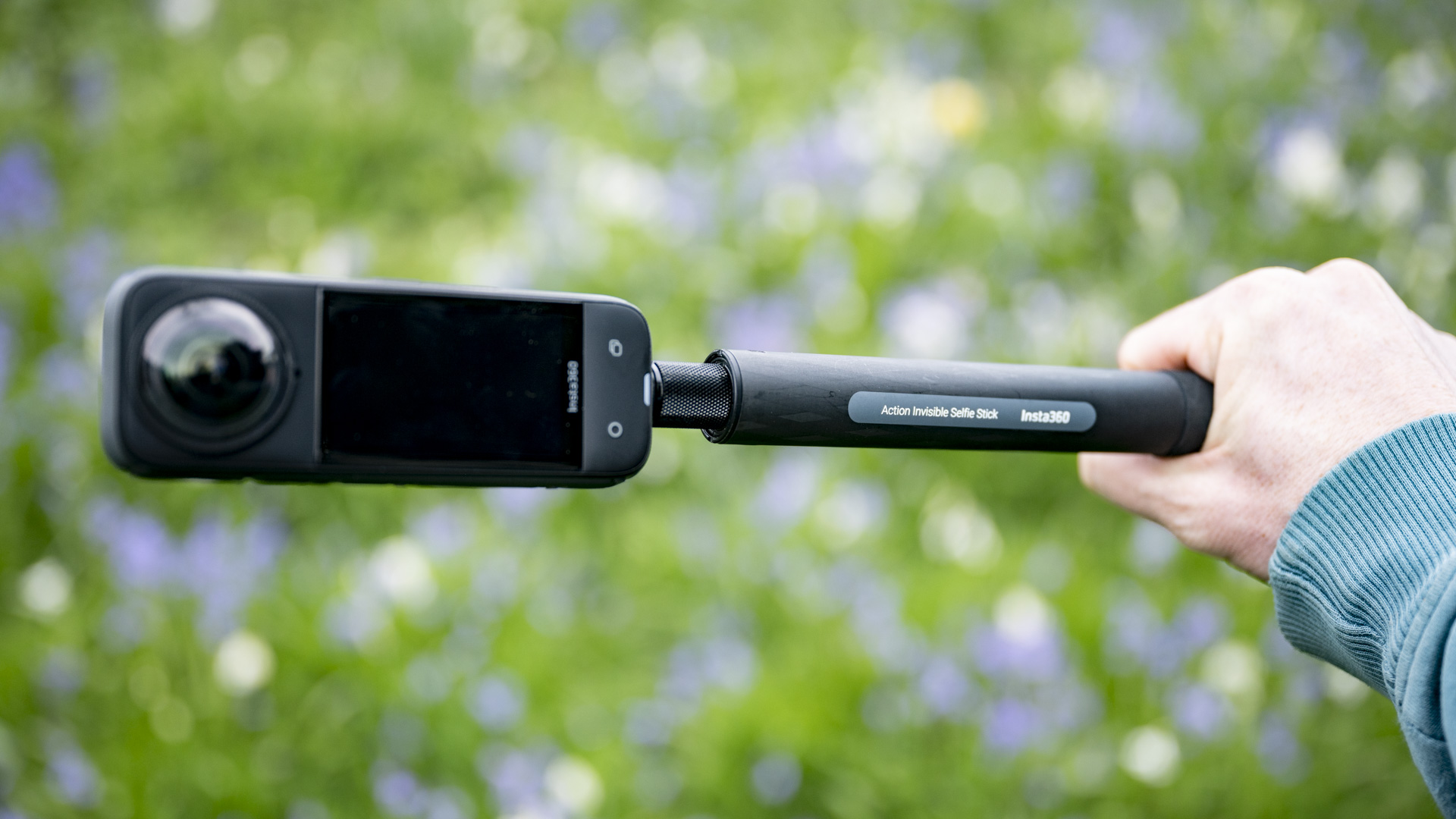
Insta360 X4: design
- Slightly bigger and heavier than the X3
- Similar X3 design includes large touchscreen and 1/4-inch threaded port for a selfie stick
- Waterproof up to 10M
- New screw-on lens guards
The stick-like design of the Insta360 X4 is very similar to the X3, and that's a good thing, because the X3 is one of the most user-friendly 360-degree cameras available. Its grippy exterior is easy to hold, or you can attach one of Insta360's invisible selfie sticks using the threaded mount point on the bottom.
Twin bulbous ultra-wide lenses cover the entire 360-degree field of view – these are the part of the X4 that really needs protecting, and to that end the camera comes with ultra-light clear lens protectors that can be screwed on and off, whereas the X3 uses non-reusable sticky lens guards.
Build quality is superb: the camera is fully waterproof up to 33ft / 10m, with all ports rubber sealed (though I haven’t had the opportunity to test the waterproofing out properly, yet). You’ll know if the seals aren't fully locked, thereby compromising waterproofing, as the orange coloring inside the catch will be visible – a neat bit of design.
You get a USB-C port for connecting and charging the camera, plus a hefty 2,290mAh battery that can record for up to 135 minutes – that's a huge increase from the 81 minutes provided by the X3's 1,800mAh battery.
The X4 records onto microSD memory cards, and naturally, because of the waterproof design, the card slot is inside the camera's battery compartment rather than directly accessible outside, as is the case on the less-robust and action-averse DJI Osmo Pocket 3.
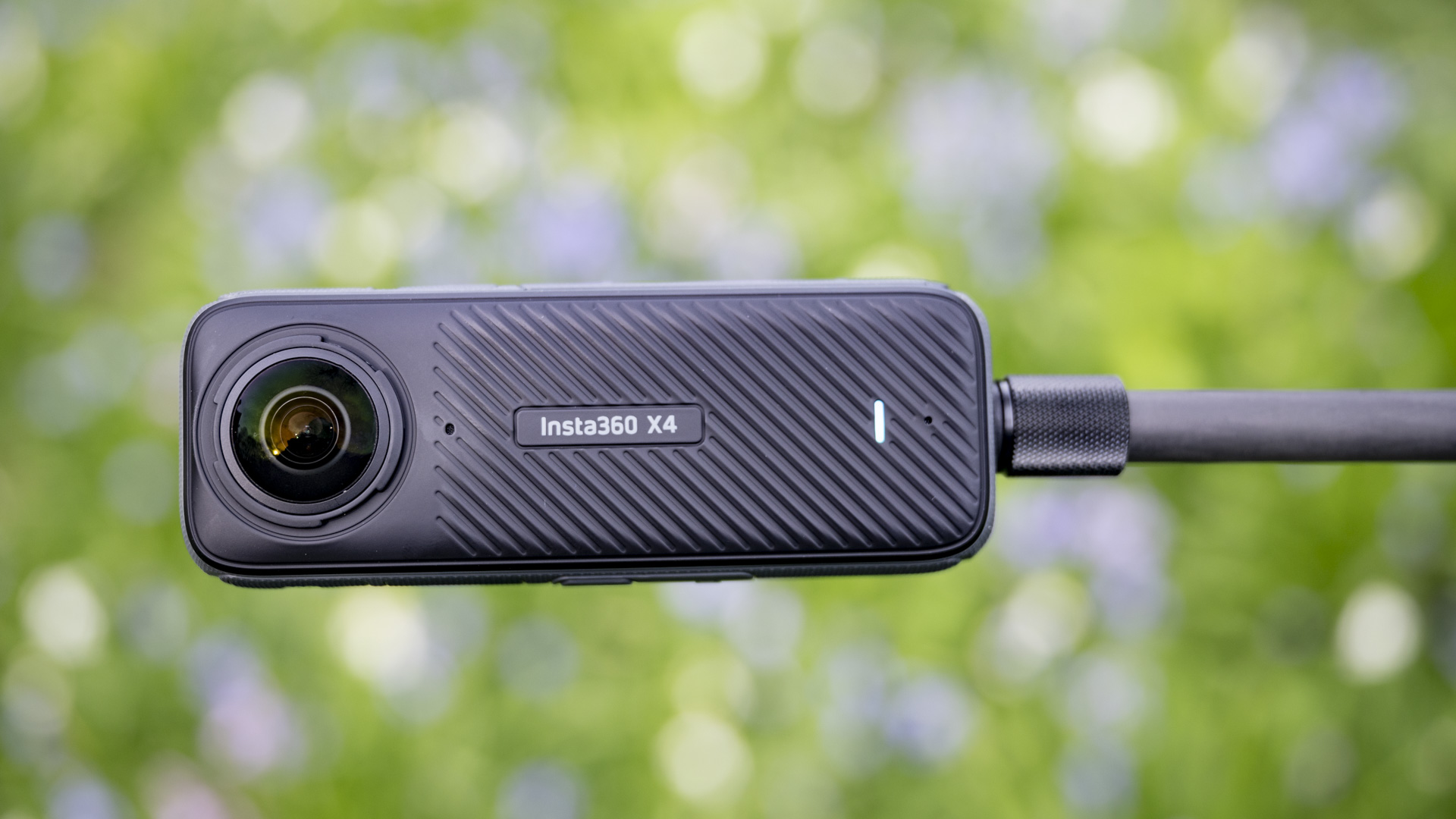
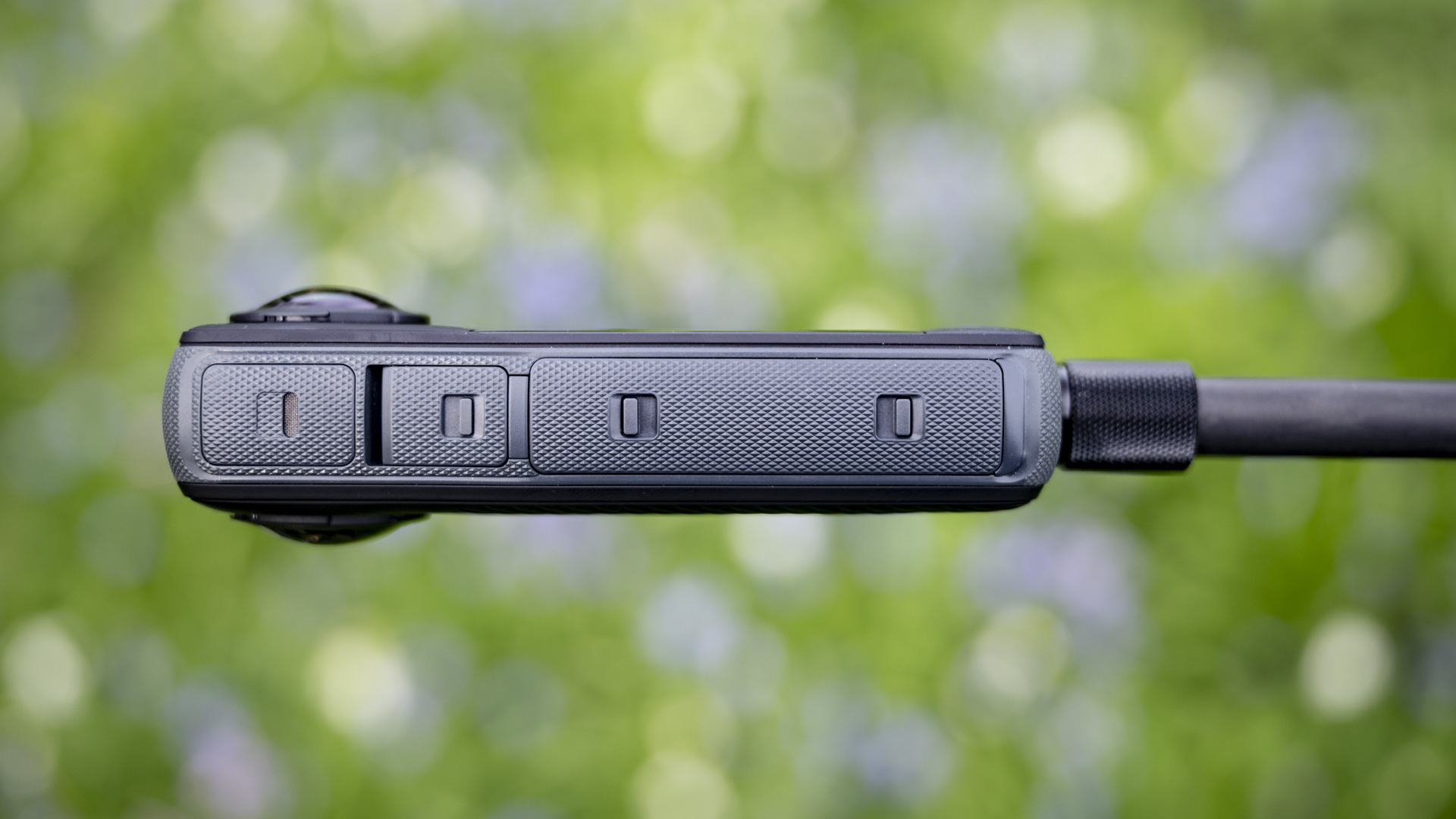
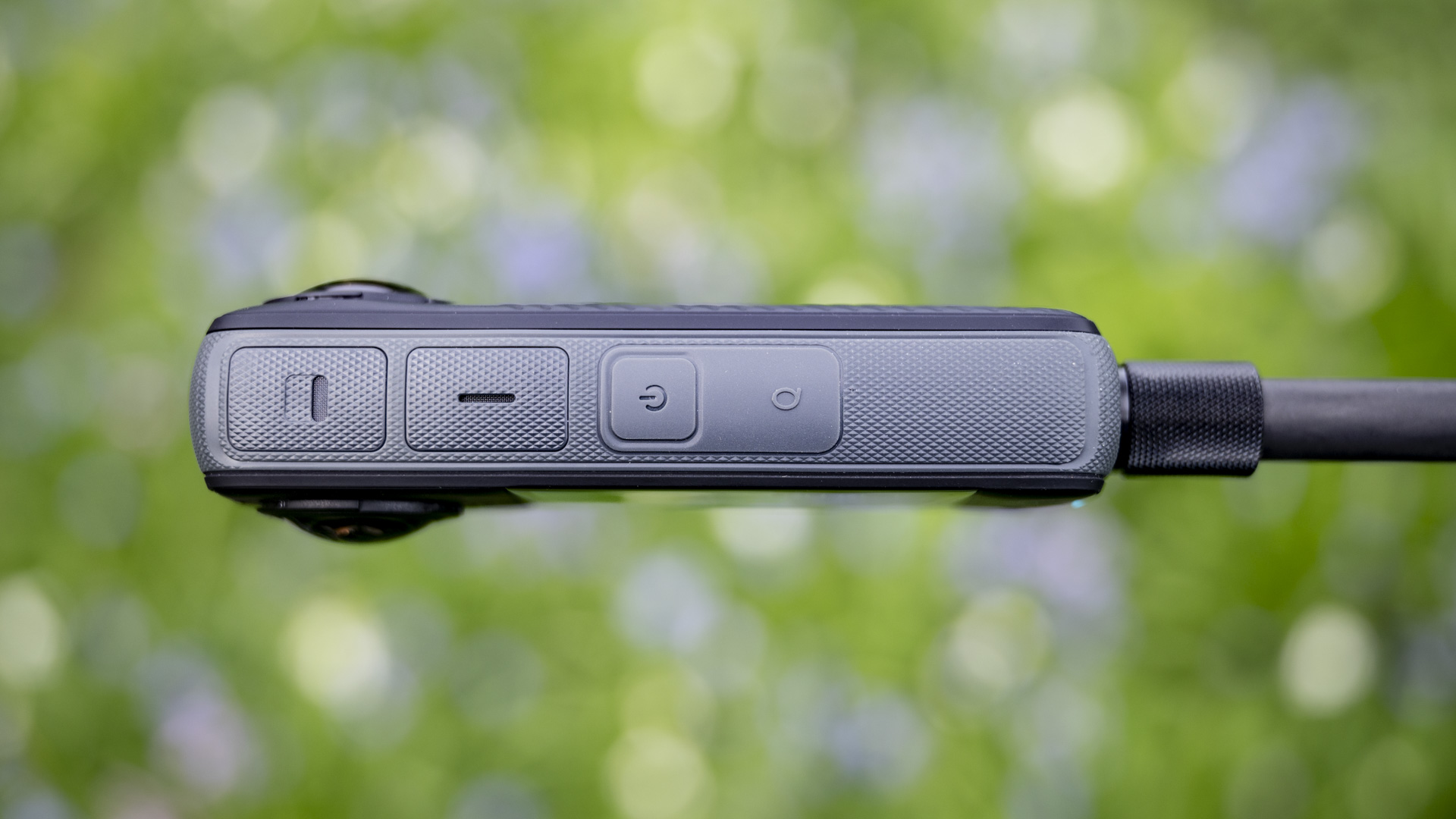
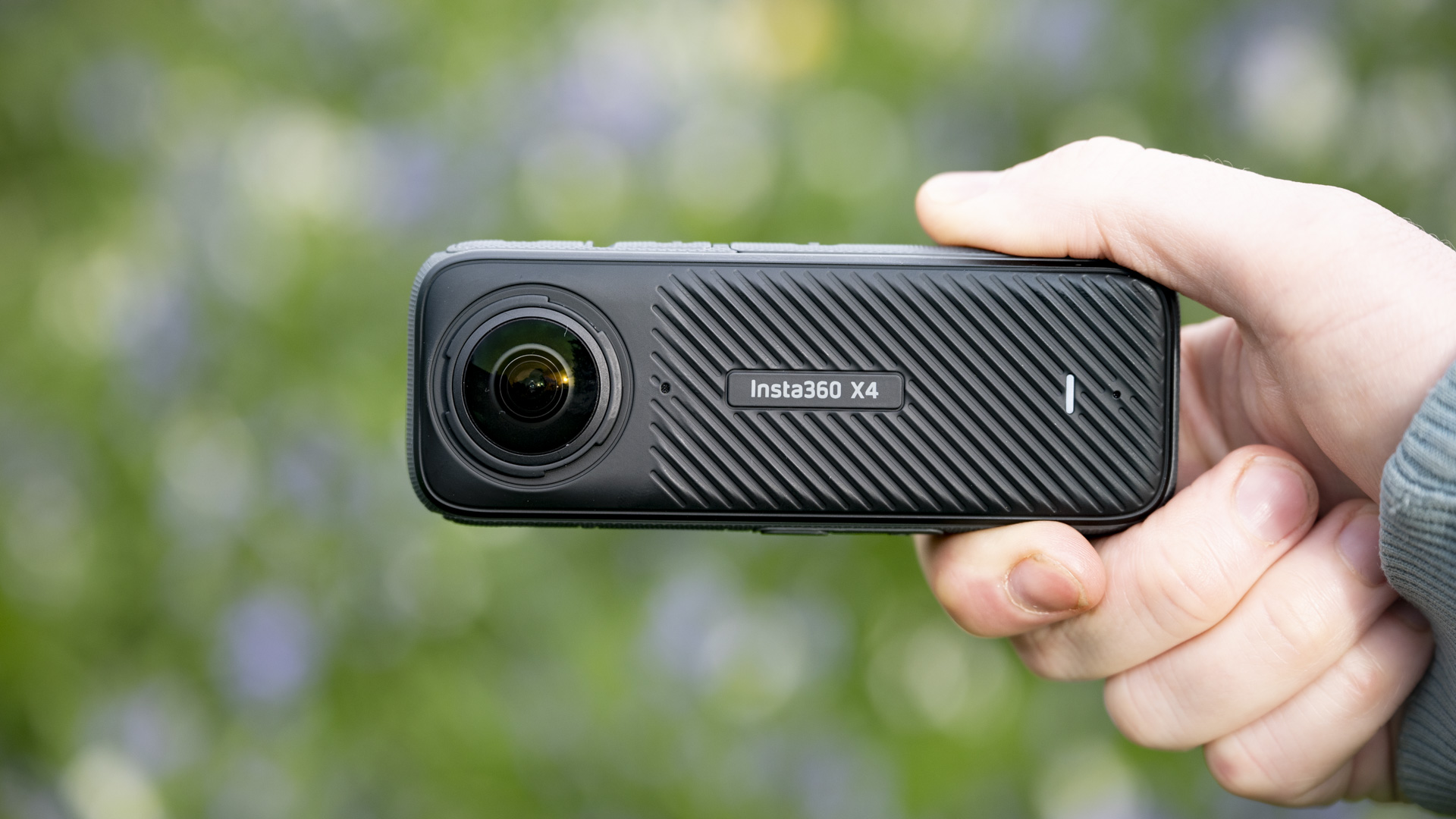
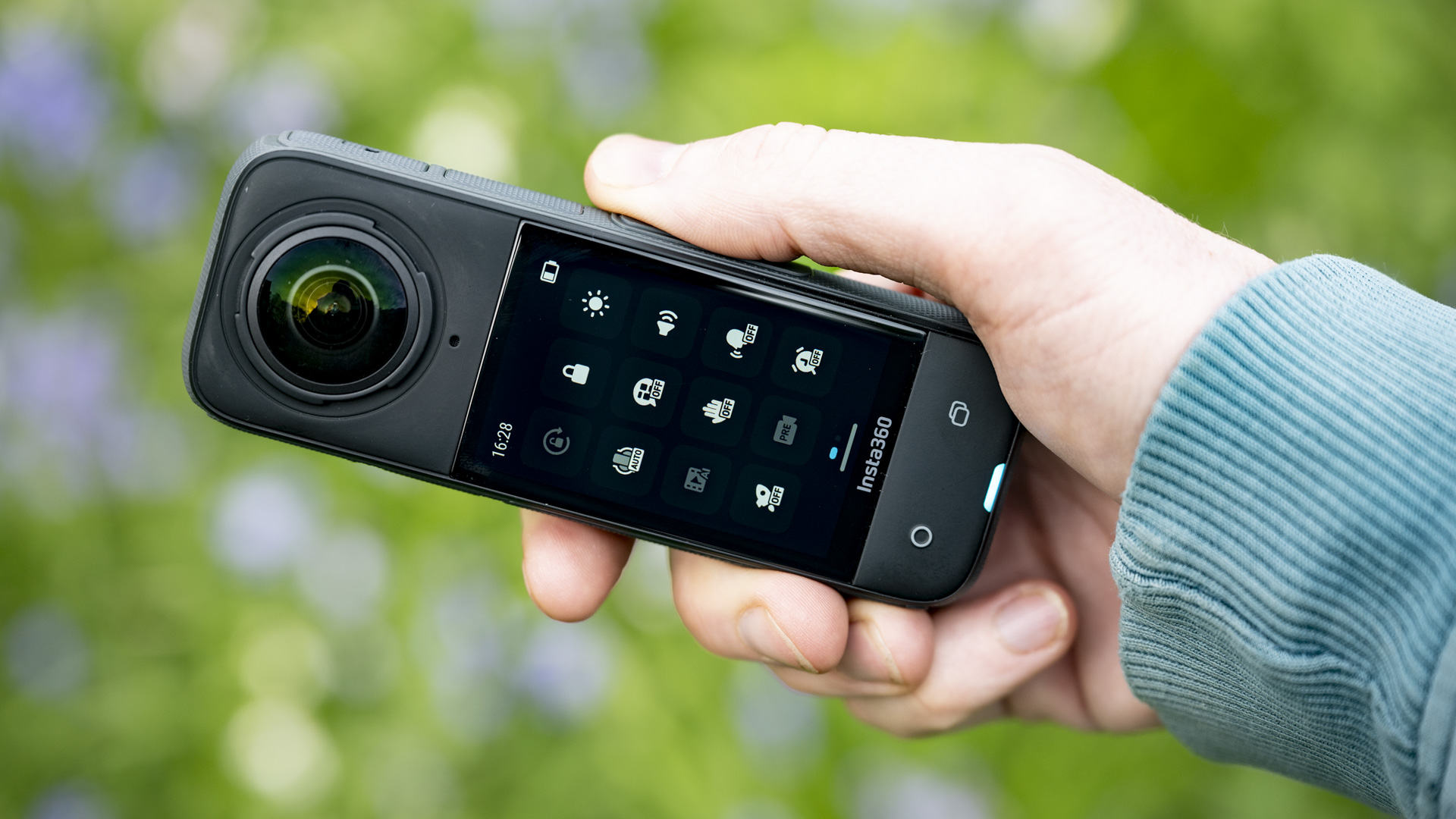
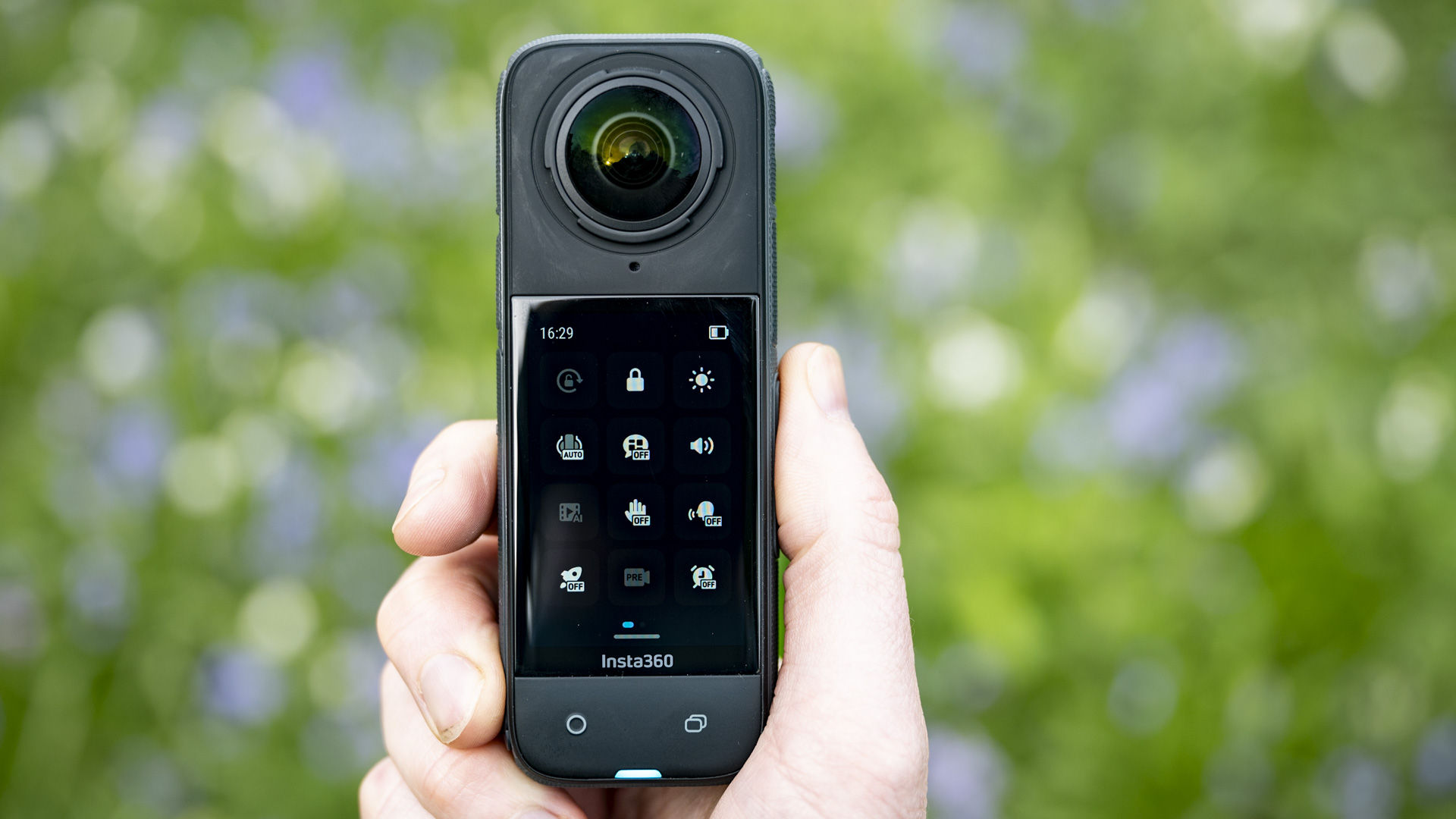
There's a slight increase in size from the X3, though it’s barely noticeable, plus a 10% increase in weight – the X4 weighs in at 7.16oz / 203g, and feels reassuringly solid for its diminutive size.
There are four direct physical controls around the camera: robust power and quick menu buttons on the side, plus shooting mode and record buttons under the generous 2.29-inch touchscreen. Most of the action happens through the responsive touchscreen.
By default the customizable options displayed on screen for quick access include the shooting mode and resolution settings, the lens, plus the lens perspective. At a push you can switch between viewing 360-degree footage from the front or rear lens (in the single-lens mode, this option selects the lens you're recording with).
The user interface is simple and quick to navigate, though a little keen to go idle – I've needed to reopen the menu many times to confirm video mode selections.
Physical controls are hard to access when the camera is out of reach on a selfie stick, and that's where voice and gesture controls come in. You can command the X4 to start and stop video recording – which proved super-handy when I had it mounted three meters above my head on the extra-large selfie stick, while a peace sign gesture will trigger the timer for taking photos. The mixture of audible and visual commands covers you in most scenarios, including underwater.
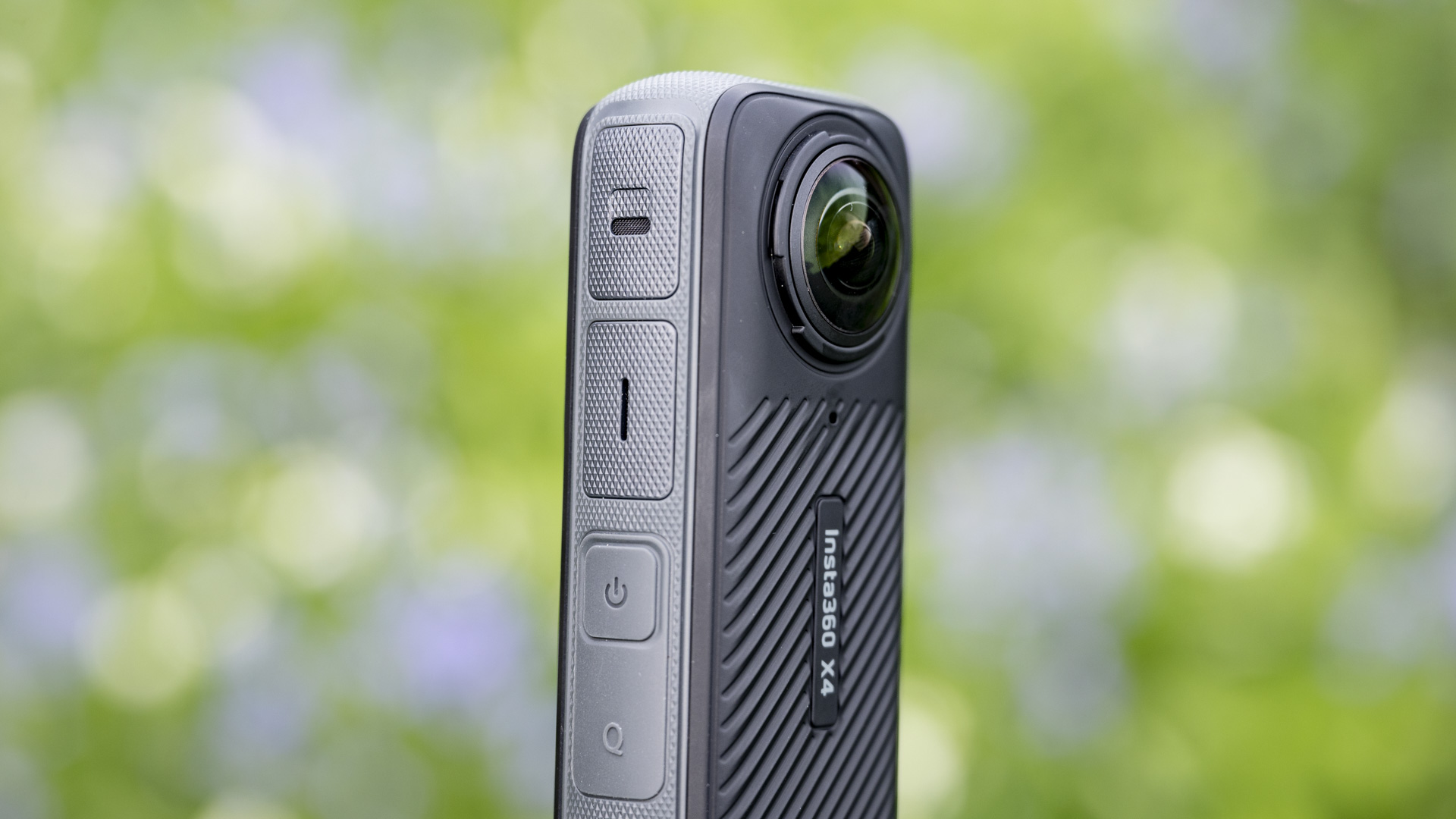
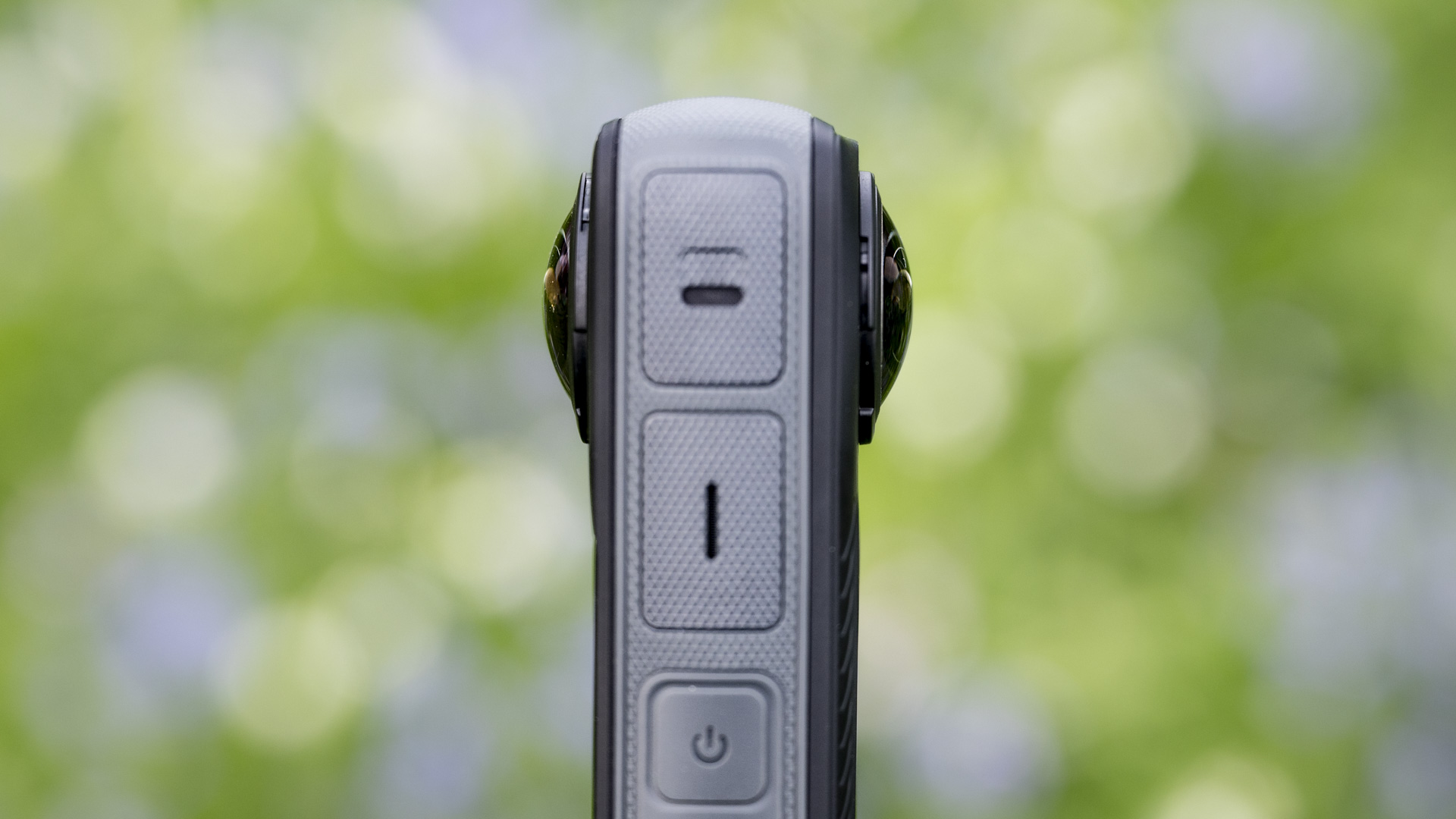
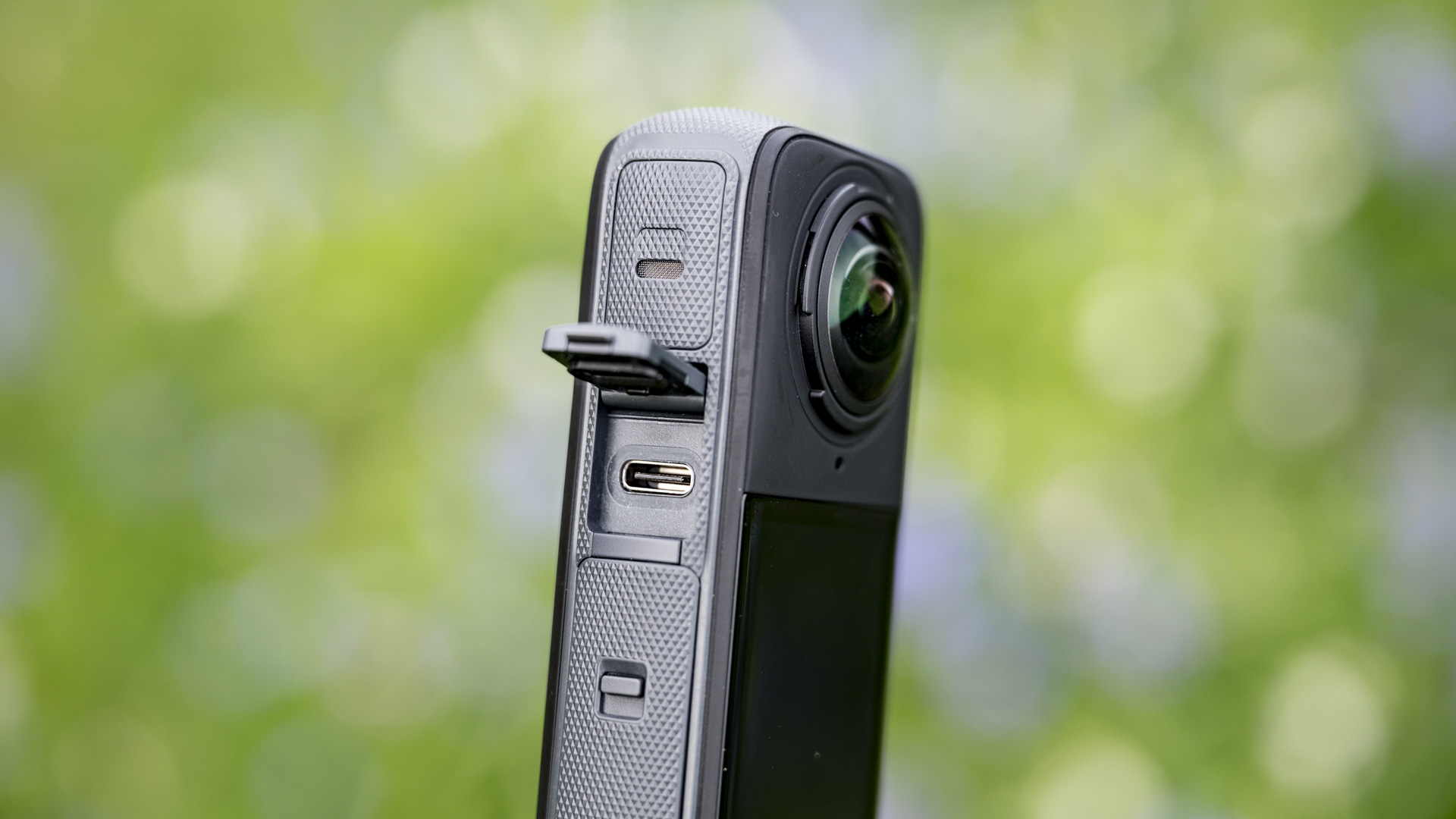
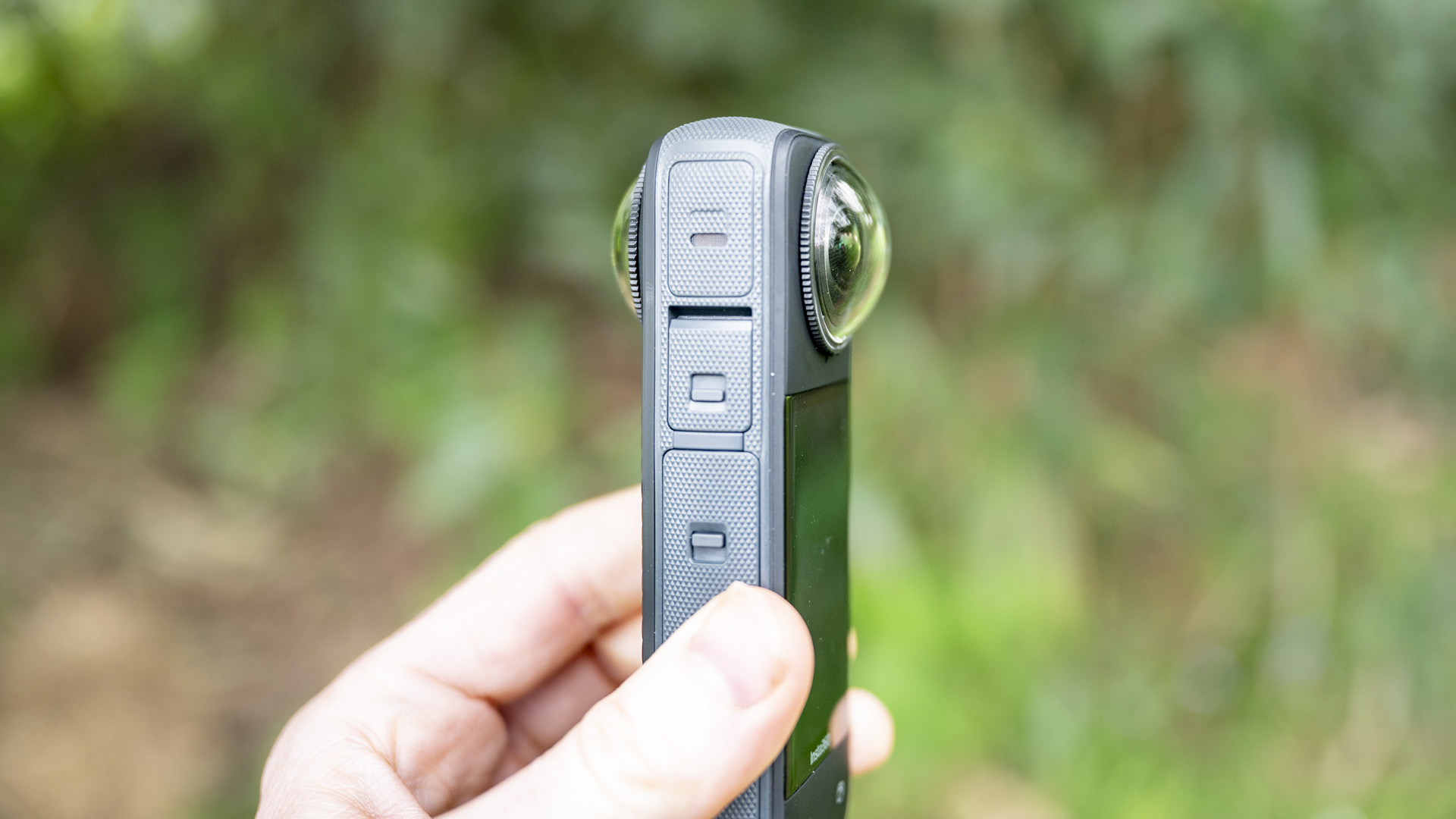
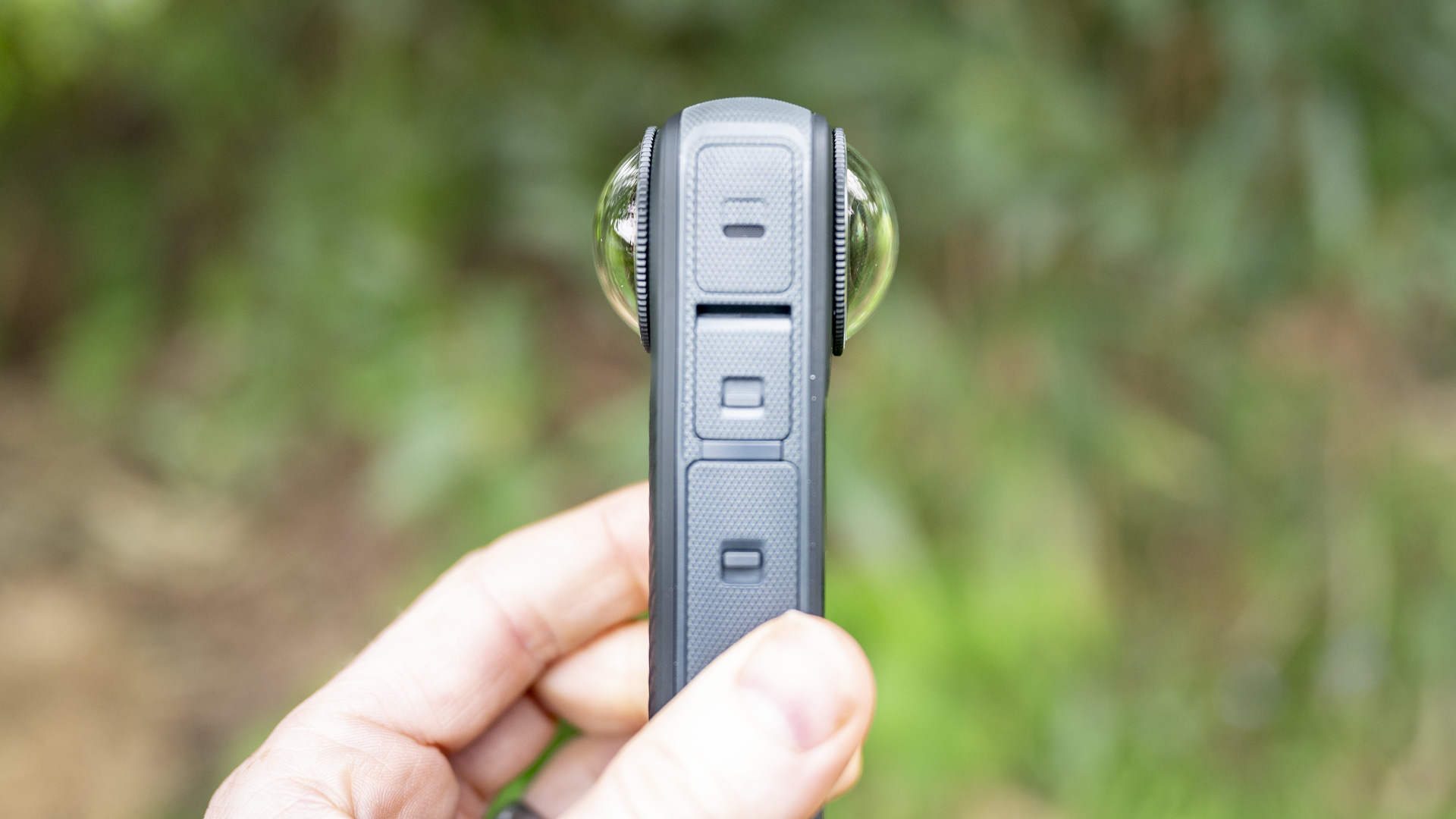
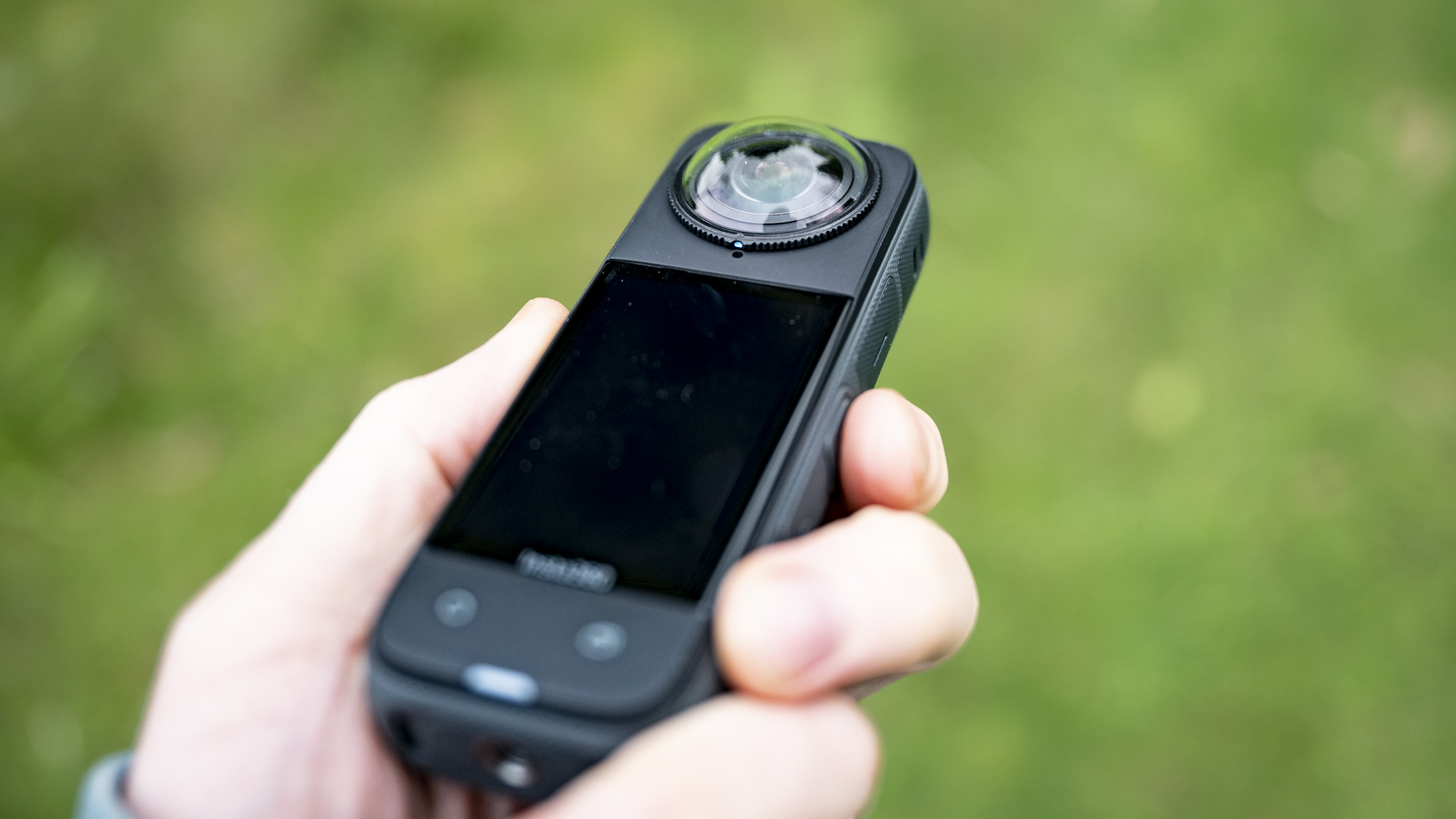
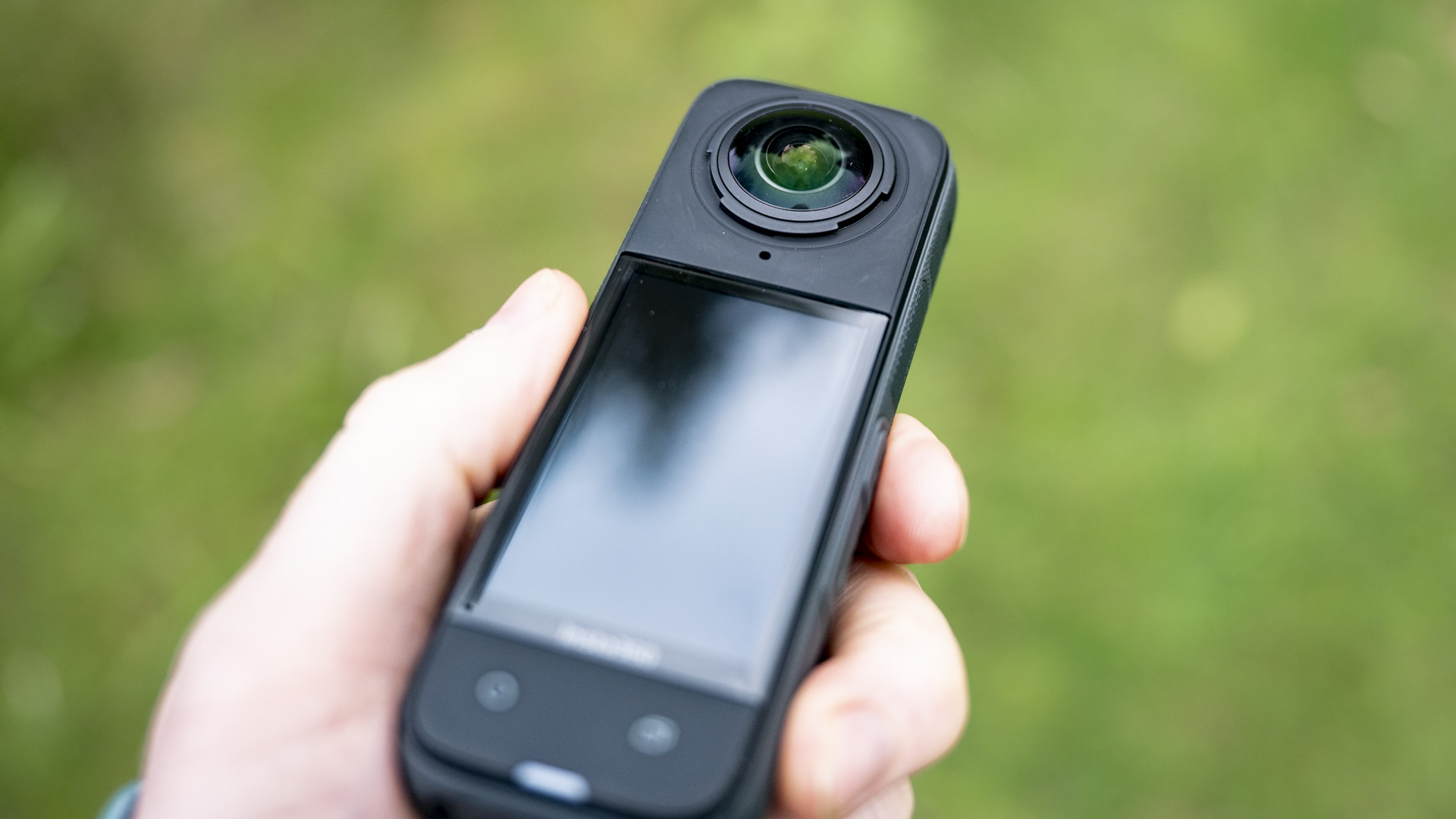
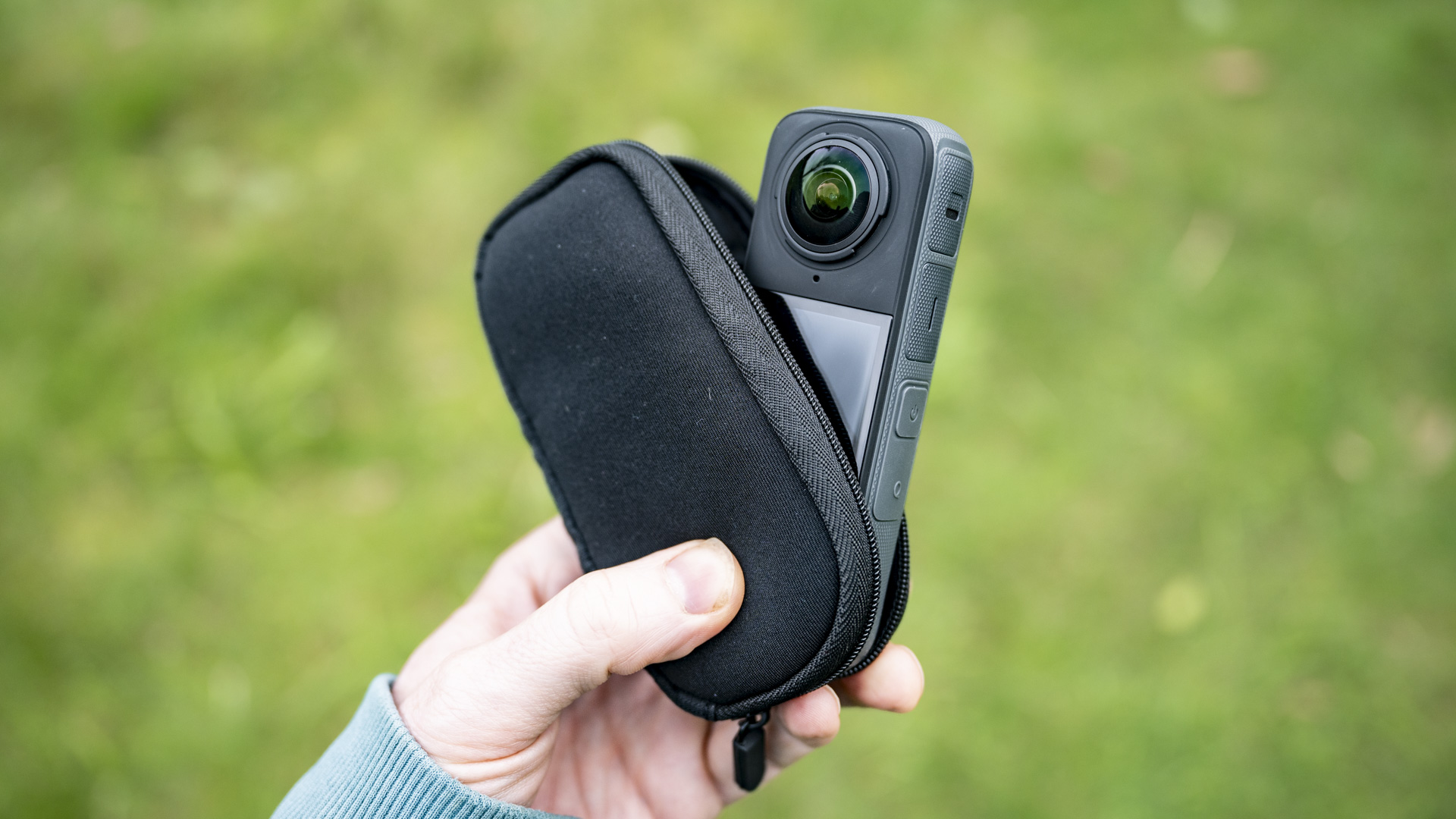
There's more to dig into by swiping the touchscreen. Flicking from right to left reveals exposure settings including color profile, while swiping left to right opens up your photo and video gallery for playback, and during playback you can swipe the screen to move around the 360-degree perspective.
Swiping down from the top of the screen opens up the main menu, through which you can activate and deactivate a number of controls such as gesture and voice commands, and connect to compatible Bluetooth-equipped devices such as headphones and remotes. You can also adjust the screen brightness here.
Explanatory on-screen text appears for most of the operational controls and shooting modes, which is super-handy when you’re getting started, especially for getting the most out of the shooting modes.
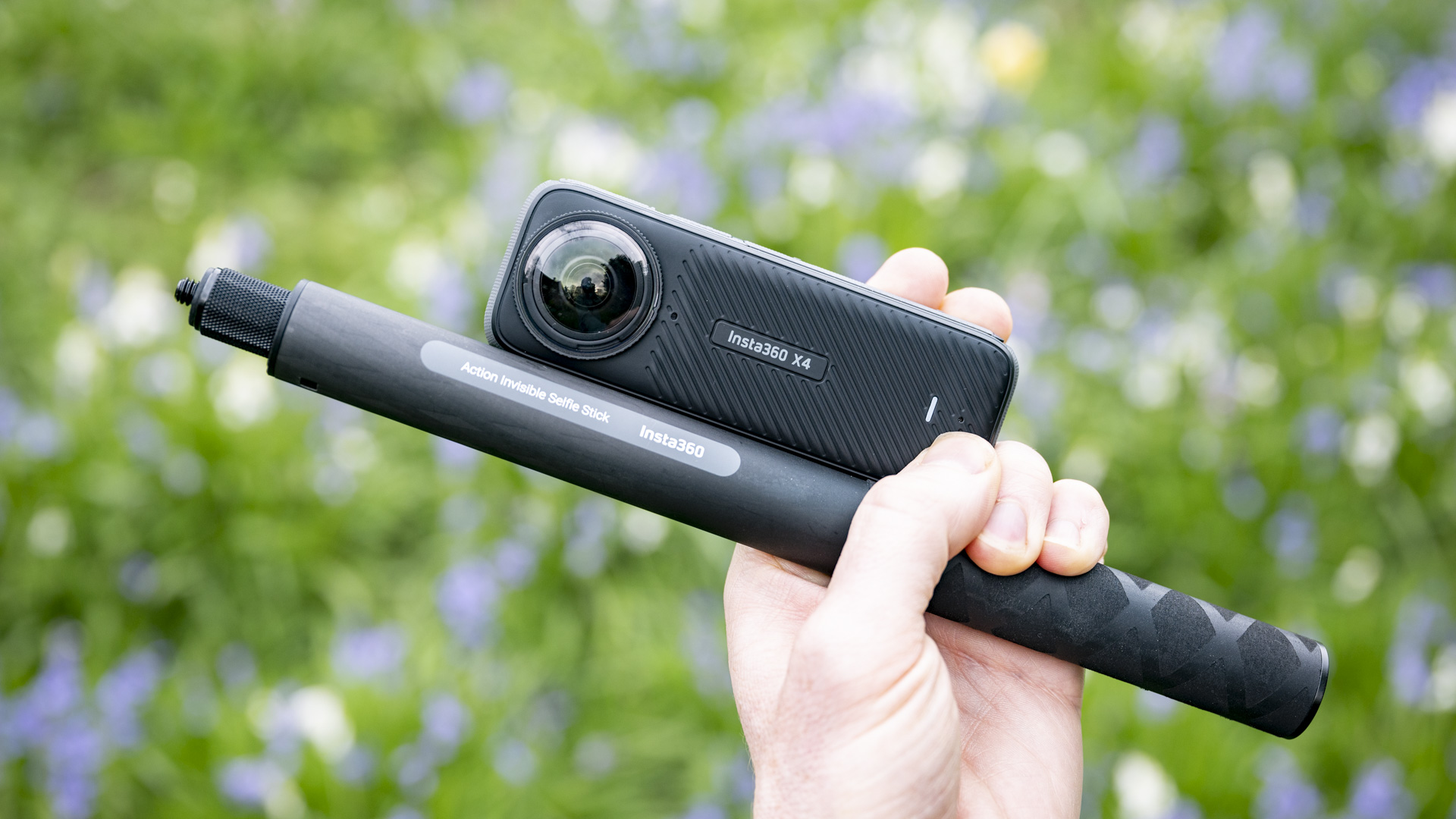

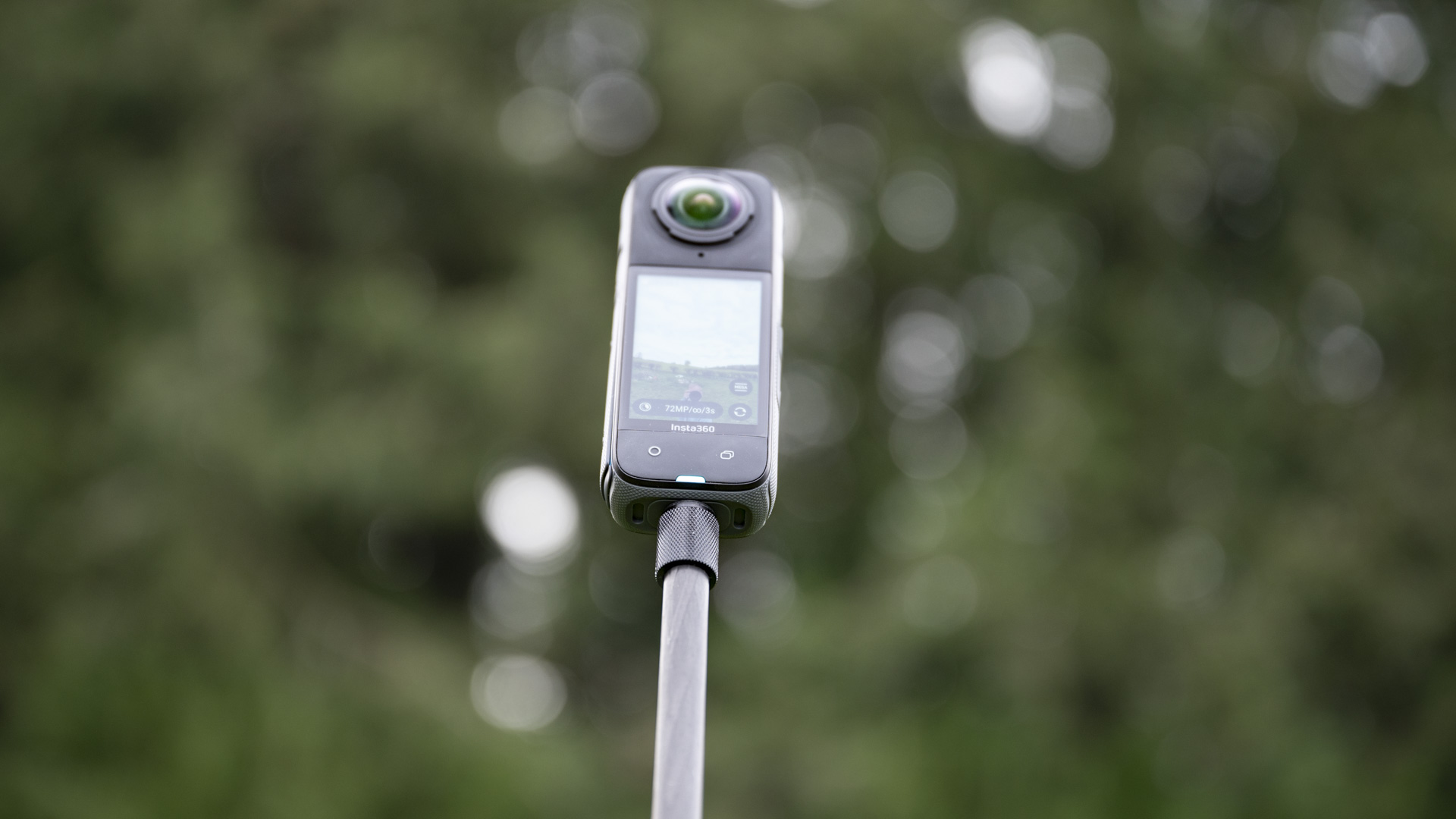
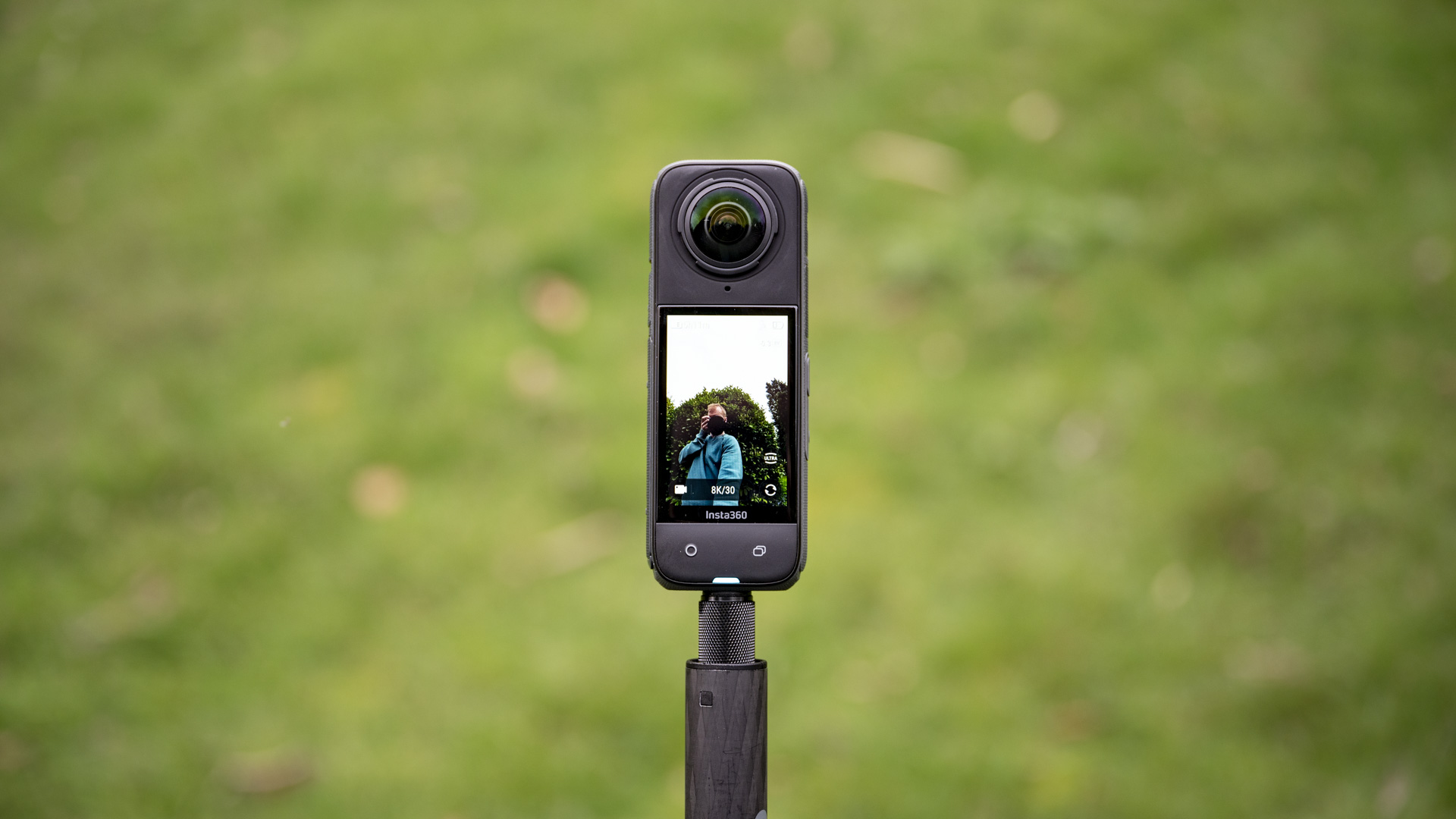
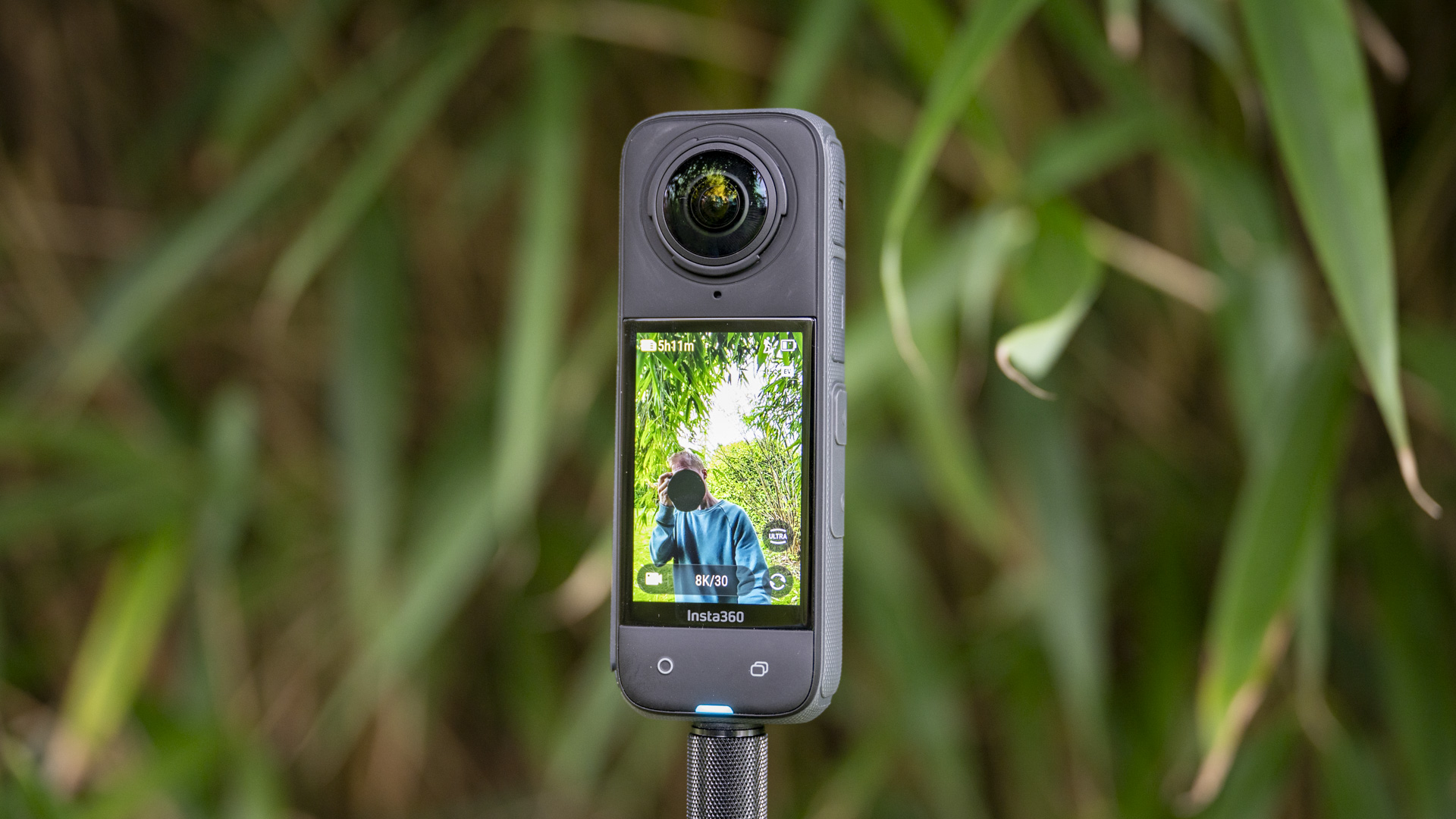
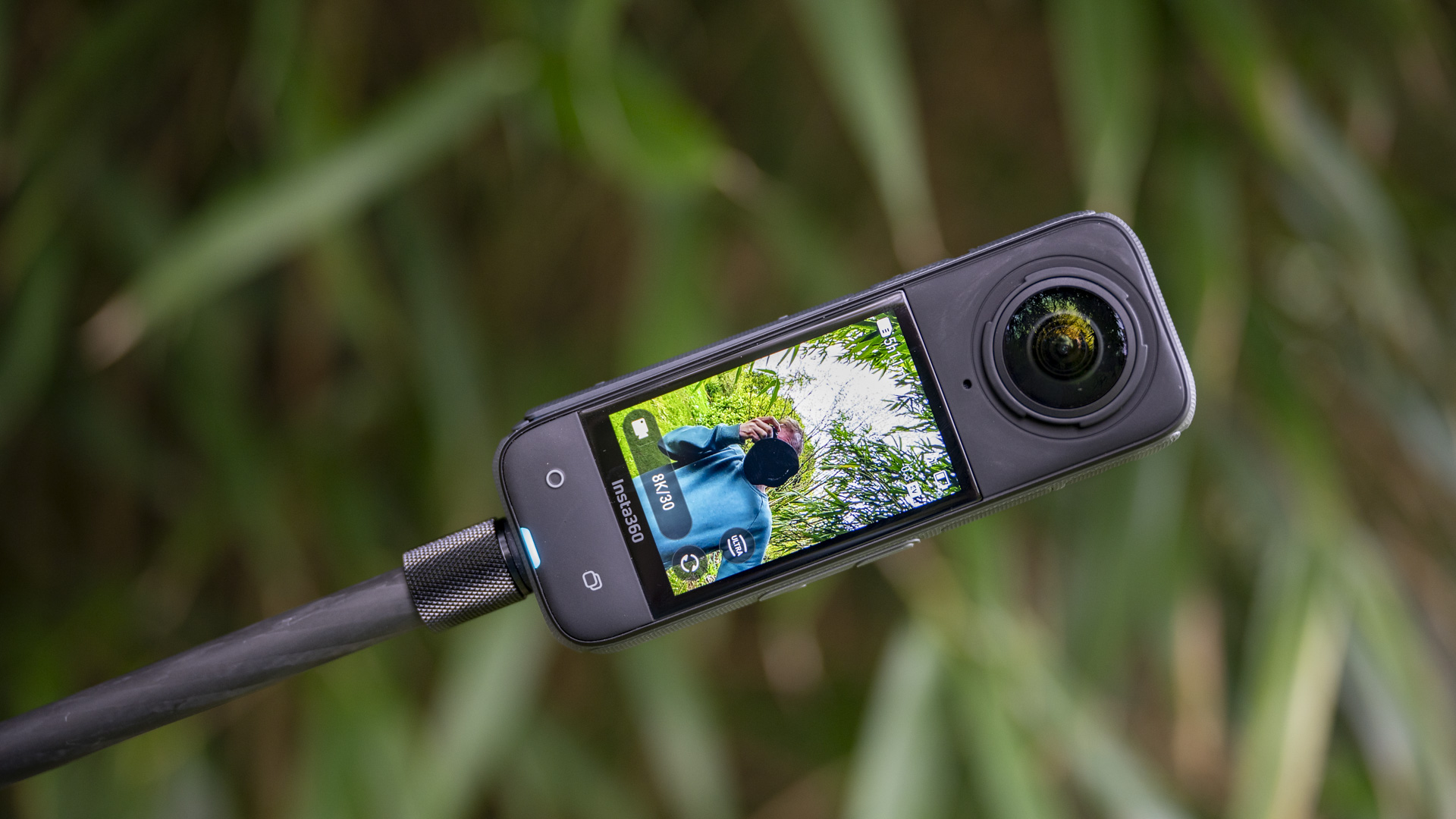
The X4 is designed to be used in vertical orientation, and as such your handling and viewing experience is largely in the 9:16 ratio. You can record in horizontal format using the single-lens mode, and there’s also a multi-aspect FreeMe mode where you can choose the aspect ratio, but overall the user experience is geared to content creators and mobile users familiar with the vertical format.
During recording, the X4 can get warm quickly, especially in the power-hungry high-resolution video modes. If you're using the X4 for shooting action, your movement will go some way to cooling the camera down, but if you're recording while largely stationary or in particularly warm environments, things can get moderately warm.
Overall, the X4 handles superbly for users of all experience levels and abilities.
Insta360 X4: features and performance
- Huge 135-minutes of recording time
- Especially capable image stabilization
- Intuitive mobile editor
- Decent range of shooting modes
As already noted, the X4 has significantly better battery life than the X3, a camera that was already one of the best of its kind. The new 2290mAh battery betters the X3's 1800mAh unit, providing up to 135 minutes of recording time – that's 67% longer than the X3's 81 minutes.
To conserve power, the camera automatically switches off the display after recording for a certain time, which is necessary especially when you're recording videos over a long period, such as timelapses. Ultimately, I've been able to use the X4 heavily over the course of a day and still have juice left, and you can also charge the camera on the go via USB-C.
Aside from a sluggish startup time – you have to wait 2-3 seconds after pressing the ‘on’ button before you’re able to record – the X4 is a responsive camera in every way. Voice and gesture commands are fairly reliable, with the tally lamp confirming you're in business.
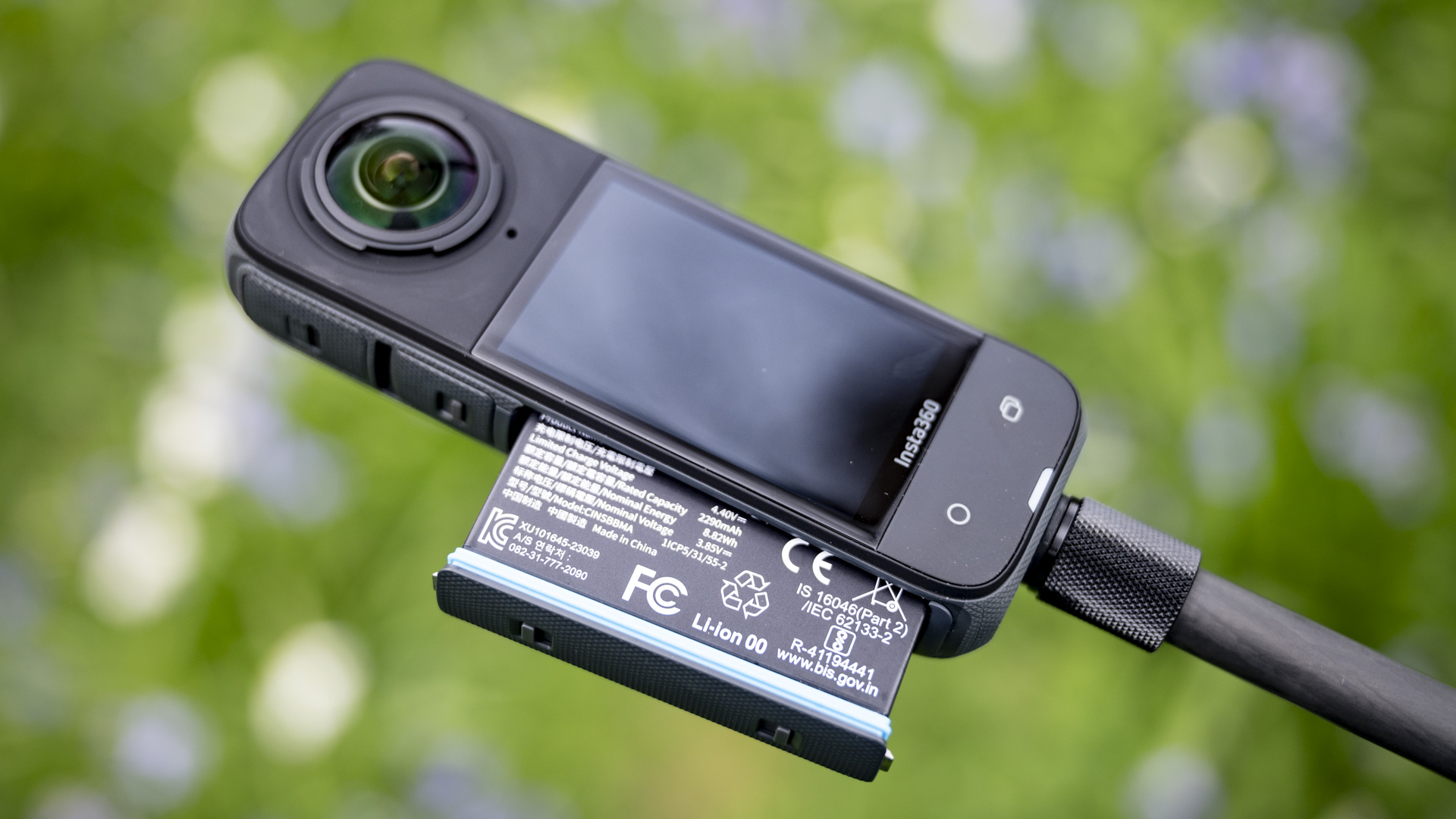
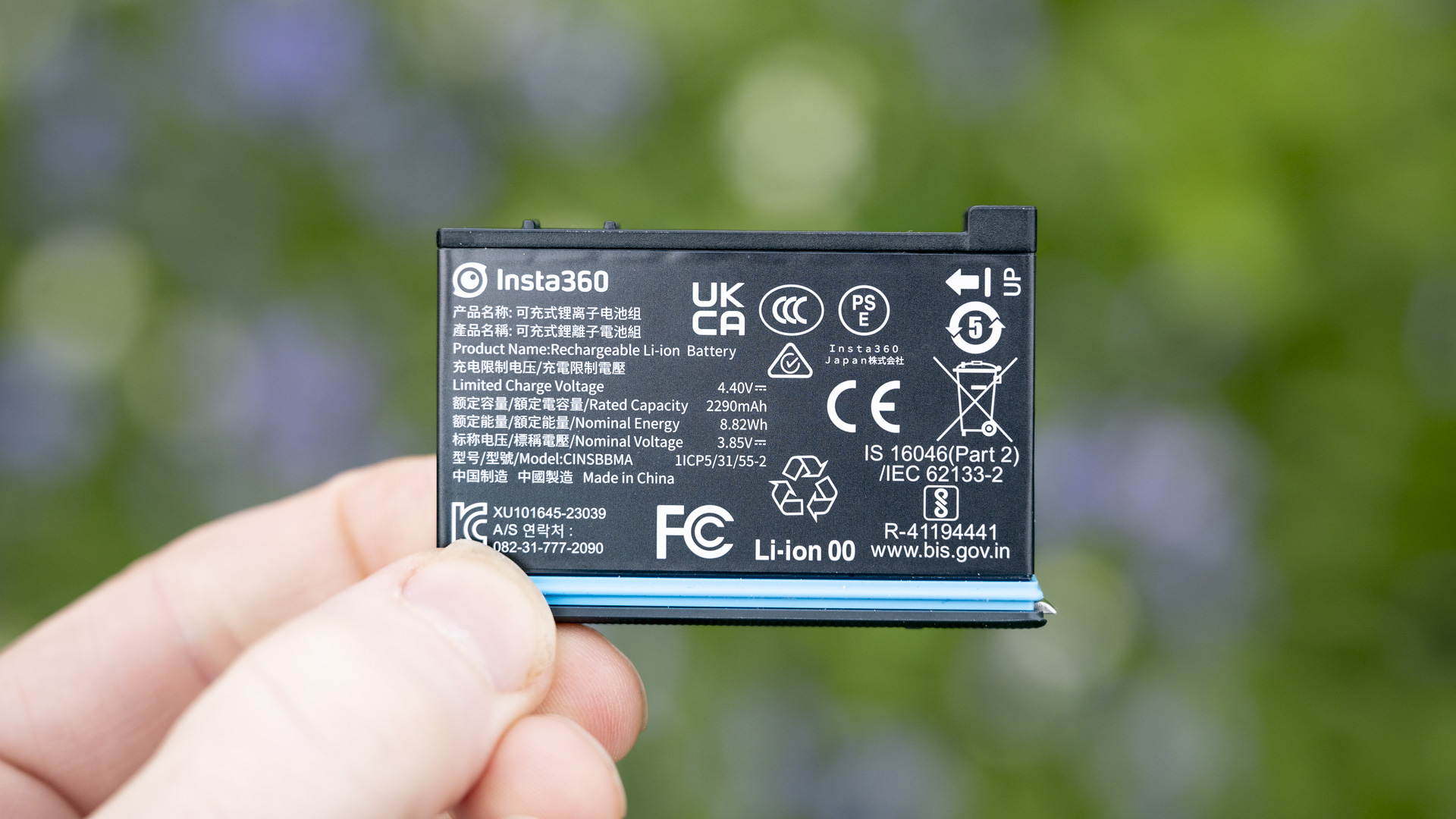
Insta360's FlowState image stabilization is superb. The ultra-wide perspective of the lenses provides plenty of latitude for applying stabilization, and also for the 360-degree Horizon Lock, which can level your footage when the camera is moving at all angles.
There are also plenty of shooting modes to have fun with – and having fun is one of the huge draws of the X4. I shot plenty of Bullet Time effect videos with the help of accessories supplied by Insta360 for this review – you attach the selfie stick to a mini tripod that doubles up as a handle, and then swing the selfie stick with attached X4 over your head.
Bullet Time shoots at 120fps, which marries up with the fast speed at which you swing the camera above your head to produce a 360 rotation with you at the center of the action.
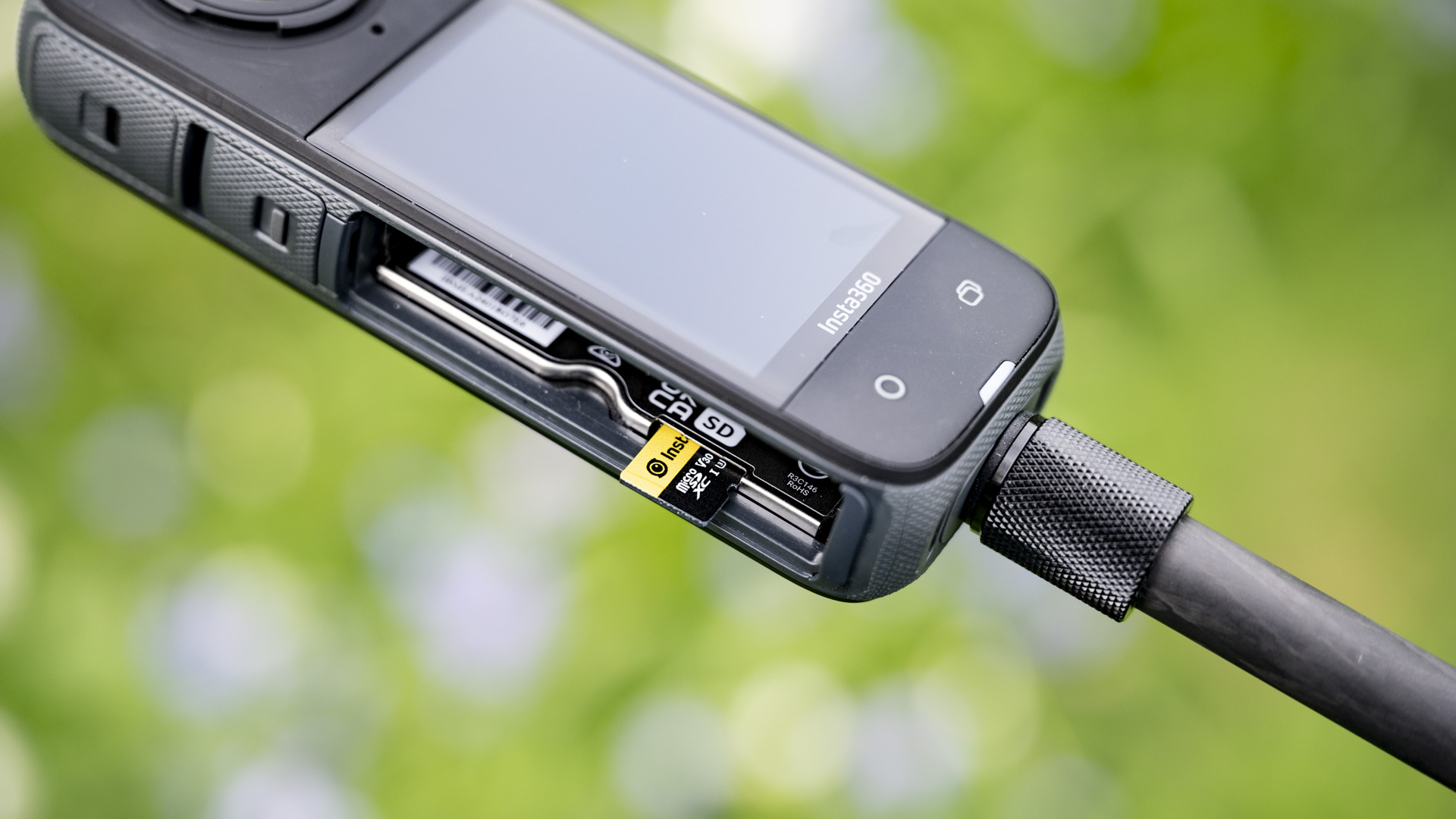
Hyperlapse is designed for speed ramps when you're on the move – a fun effect for showing off new places – while timelapse is designed more for when the camera is stationary, such as capturing the transition from golden hour to nighttime.
Single-lens modes include the MeMode, with subject tracking that automatically keeps you (selfies) or your subject at the center of the action. FreeFrame is super-handy, too, providing an adjustable aspect ratio, so you can decide if you'd rather have a horizontal or vertical aspect for social later on.
There are too many modes to fully unpack here – suffice to say the Insta360 X4 combines a plethora of fun shooting modes with a simple user experience.
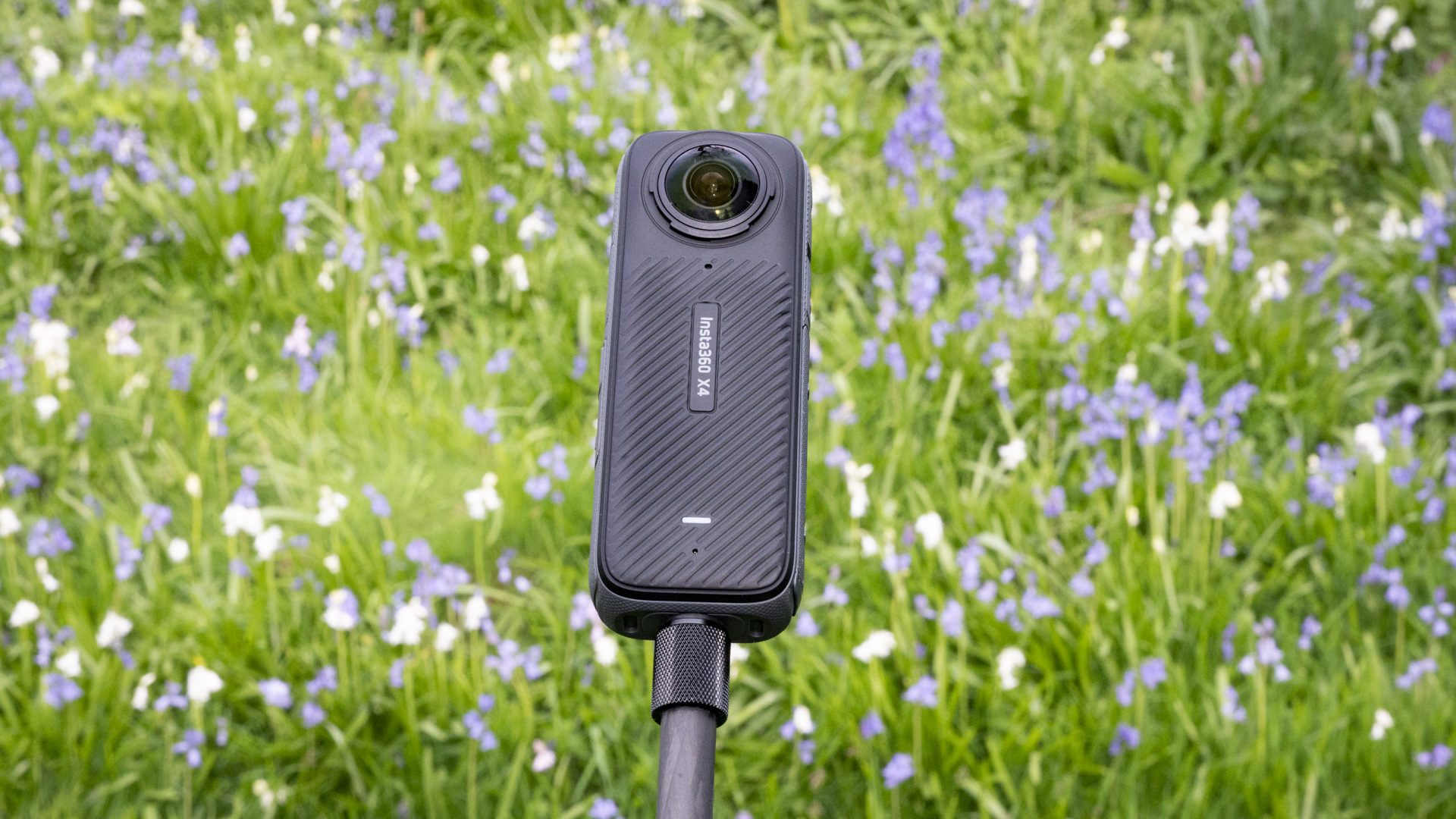
Insta360 X4: image and video quality
- 8K 360-degree video up to 30fps, with flat color profile and both H.265 and H.264 codecs
- Single-lens 4K video up 60fps
- Slow-motion 100fps now in 4K
The Insta360 X4's headline feature is its 8K video recording, a bump from the 5.7K resolution of the X3. Given the particularly wide field of view of the twin lenses, the extra resolution gives you much greater flexibility when editing your 360-degree videos to focus in on key action areas, and detail looks nice and crisp from what I've seen so far.
There's also a greater range of frame rates, and you can record slow-motion video up to 100fps in 4K (the X3 recorded 100fps in 3K), and the single-lens mode can now shoot in 60fps where the X3 was limited to 30fps. This increased flexibility enables you to mix up the feel of your shots, and also makes you feel like the X4 is a competent standard action camera, especially with modes like FreeFrame, which enables you to mix up aspect ratios.
The X4 isn't just a video camera, and can record 360-degree photos up to 72MP and 18MP HDR photos. Switch to the single-lens mode and photo resolution is 36MP, and there's an easy to set gesture-controlled timer for any photo mode, giving you time to get ready for your close-up.
The high-resolution 1/2-inch sensor is pushed to the limit indoors, and indeed in bright sunlight, especially when you consider that the X4 records everything around you, from bright sky to deep shadows.
As such, it's worth thinking through which video modes you'll use for scenes. HDR video captures more detail in bright highlights and deep shadows, with the downside being footage that looks visibly processed rather than natural. A decent alternative for those who don't mind editing is shooting in the Flat color profile, and then grading the footage afterwards.
We're currently processing the wide variety of sample photos and videos that we've shot with the Insta360 X4, and we'll update this hands-on review with those, once we've spent sufficient time editing and analyzing the quality of the content we've captured. Only then will we add a final score rating for the X4 – but our first impressions are hugely promising.
Should I buy the Insta360 X4?
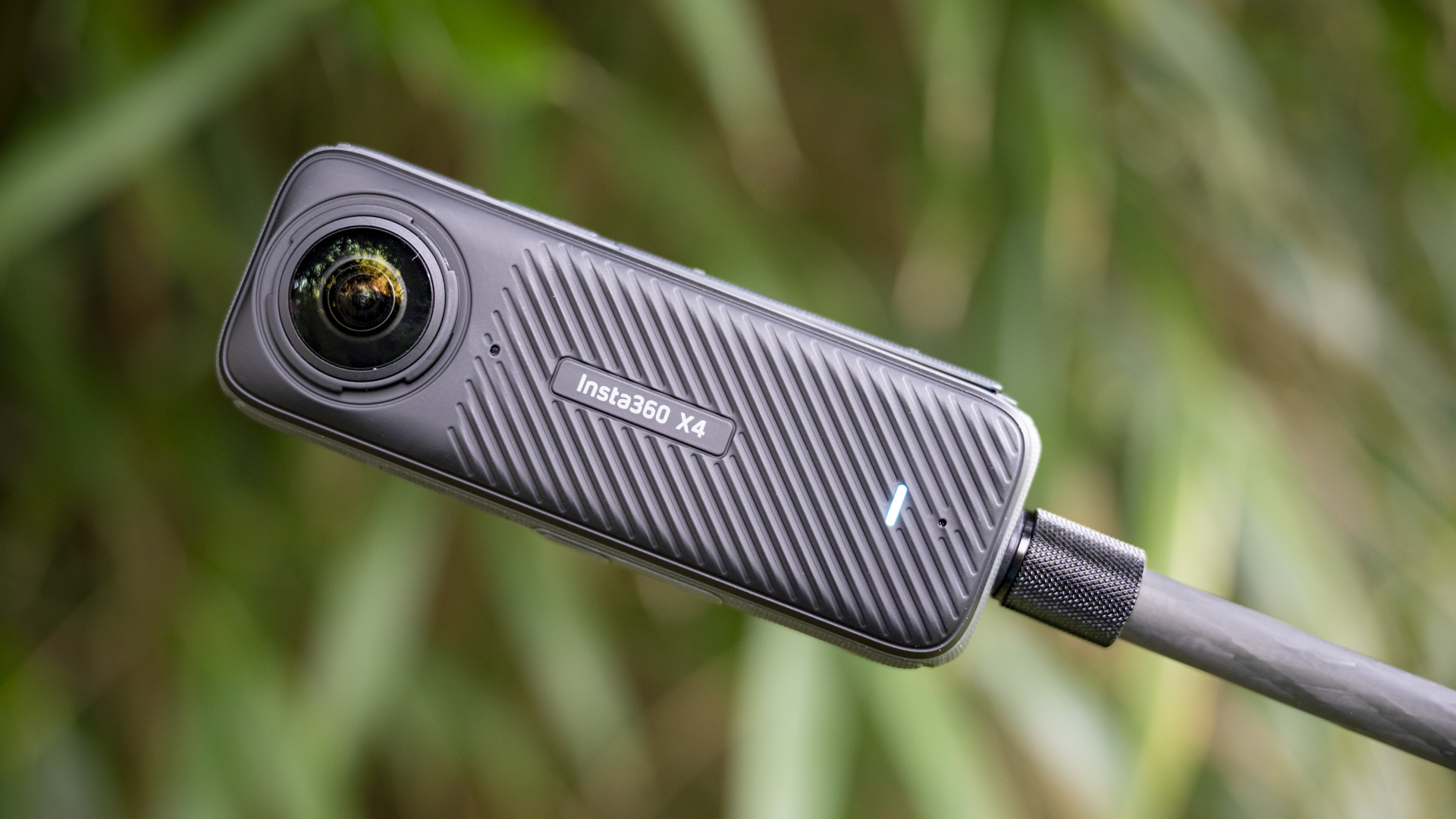
Buy it if...
Don't buy it if...
Insta360 X4: Also consider

If our Insta360 X4 review has inspired you to think about other options, here are two more cameras to consider…
How we tested the Insta360 X4
- Sporadic use over a few weeks
- Bike rides and vlogging in various lighting conditions
- Bullet time, hyperlapse, and regular video recording using a variety of color profiles and resolutions
We had our hands on the Insta360 X4 for several weeks before its official launch. Sadly we've not used it for the kind of adrenaline-filled extreme sports that you see in the launch videos, although it's still had extensive real-world testing.
We've run it in 8K capture for long periods to test its power and stamina, used it for vlogging on the move, and for moderate sports such as road biking. We've tried out the various video resolutions, color profiles and HDR video capture to see how the small 8K sensor copes in bright and low light.
The various video modes have been played with too, including bullet time and hyperlapse, plus we've taken still photos in the various options.
First reviewed April 2024







